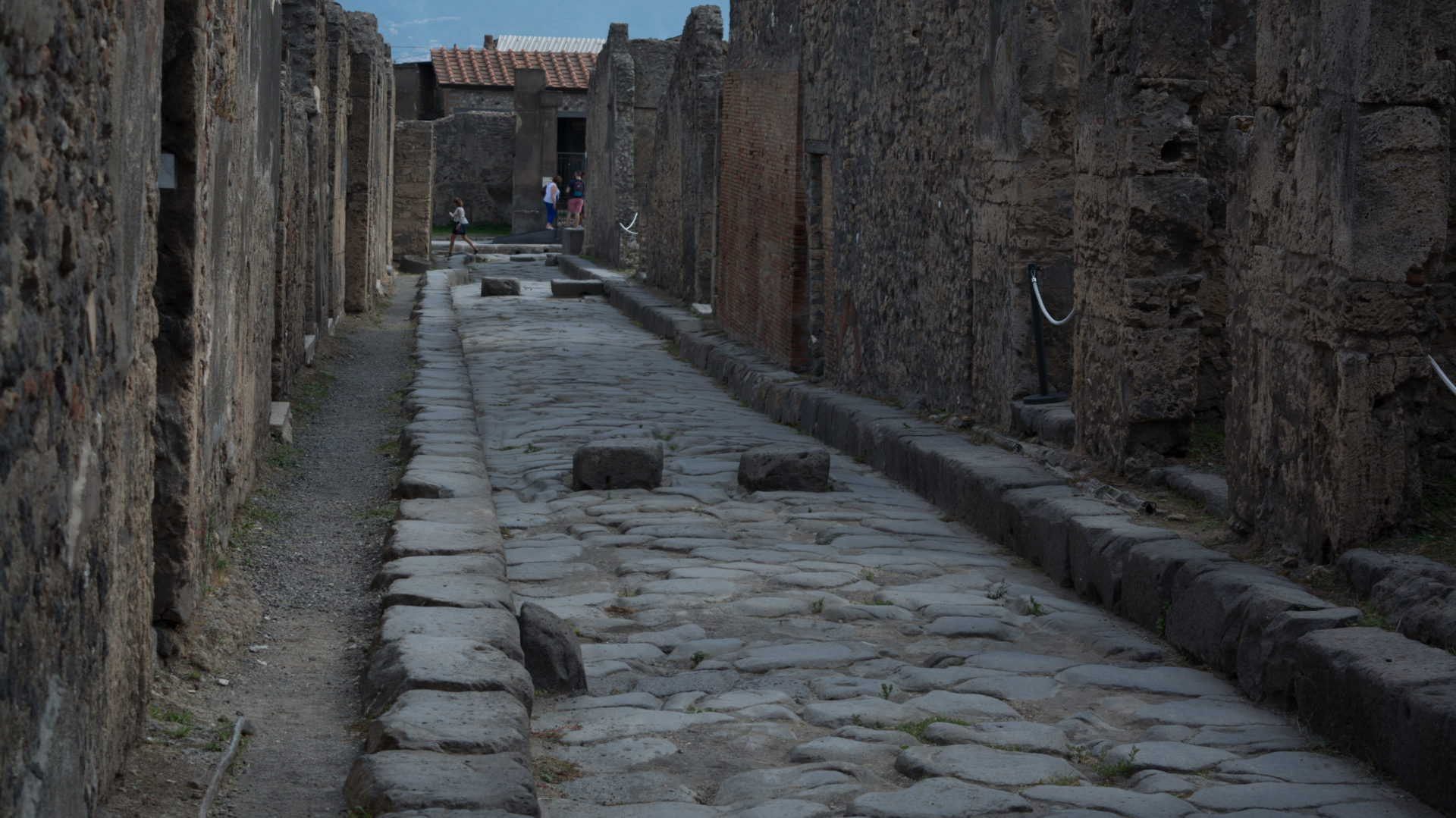Our exploration of Syracuse (known to the Greeks as Siracusa) actually began during the evening of Day 4. After settling into the hotel, which had a beautiful seaside overlook, Denise took some of us on a brief tour of the nearby archaeological attractions. This evening we would stay on the island of Ortygia, the city’s original settlement site, and would wait until morning to explore the rest of the city.
One of the first places we stopped to visit was this beautiful cathedral:
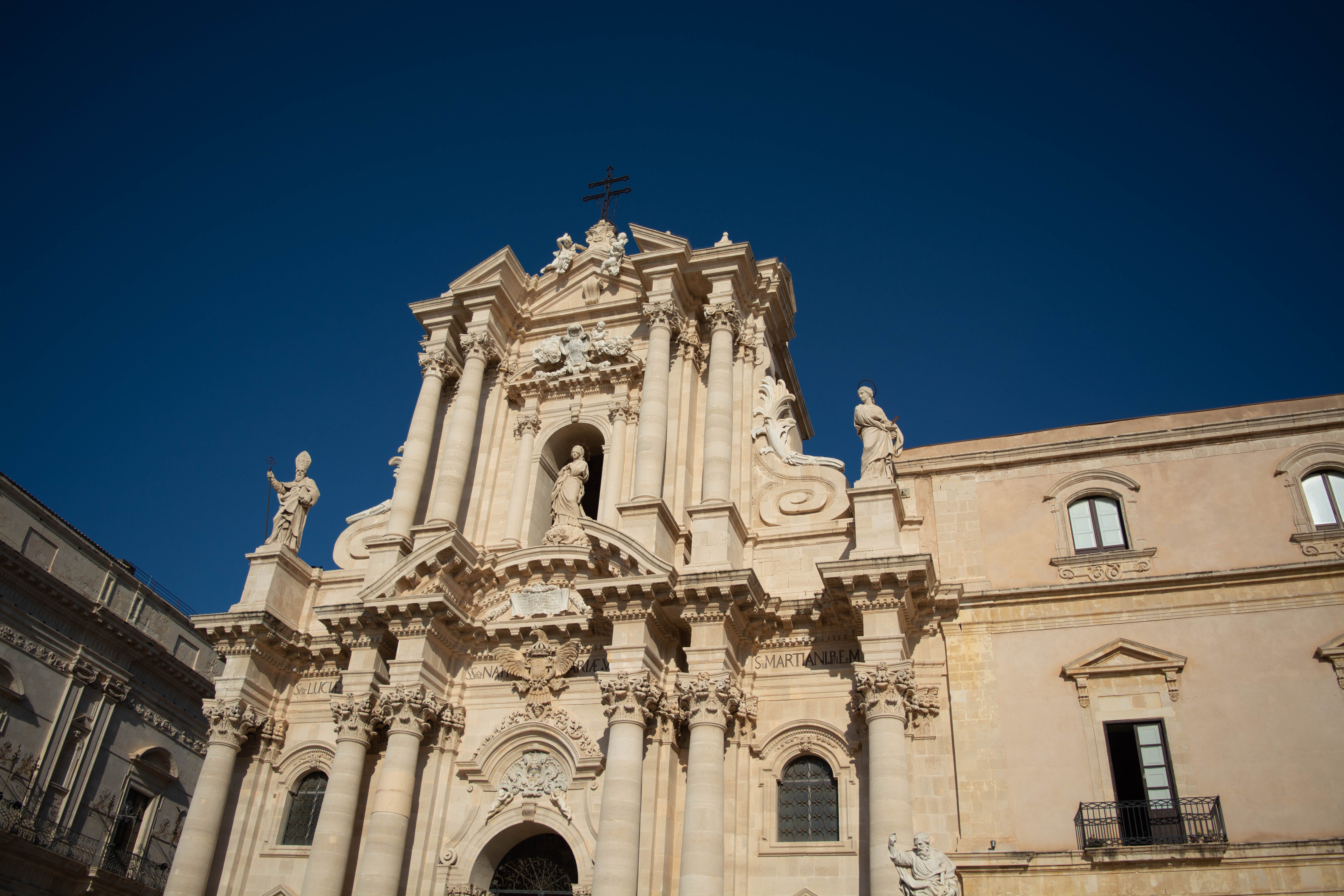
We took a brief peek inside, but had to be quiet because a wedding was taking place:
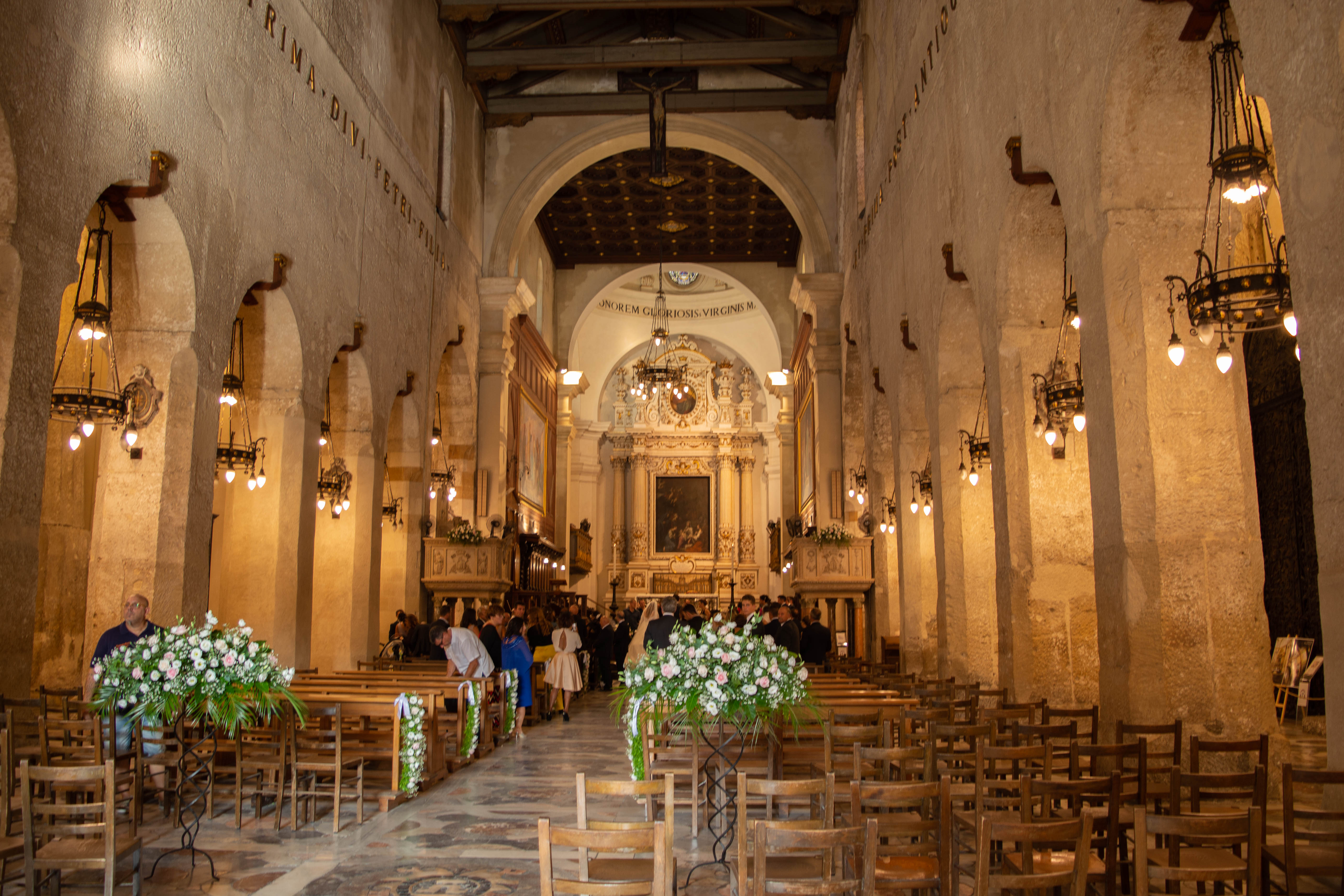
This cathedral is built around the ruins of an ancient Greek temple. Like many other places in the Mediterranean, the Christians here repurposed the pagan temples into churches once the people of the town had converted. But before the temple-turned-church could be used a spiritual cleansing ritual had to be performed on it. This ritual required quite a large supply of Holy Water.
This particular cathedral was built over the temple in the 600s AD by Saint Bishop Zosimo, the first Bishop of Syracuse. He was later martyred. The conquering Arabs then converted the cathedral into a mosque in 878. The Arabs continued to worship here for about 200 years. When Roger I (the first Norman ruler of Sicily, covered in Day 1’s post) reconquered the city in 1085, he converted it back to a Christian cathedral, which it remains today.
In ancient Greek times this temple was built to honor Athena and was completed in the 400s BC, similar to the temples seen earlier in the trip. Once we were inside we could see the original ancient columns, still standing here after more than two-and-a-half millennia:
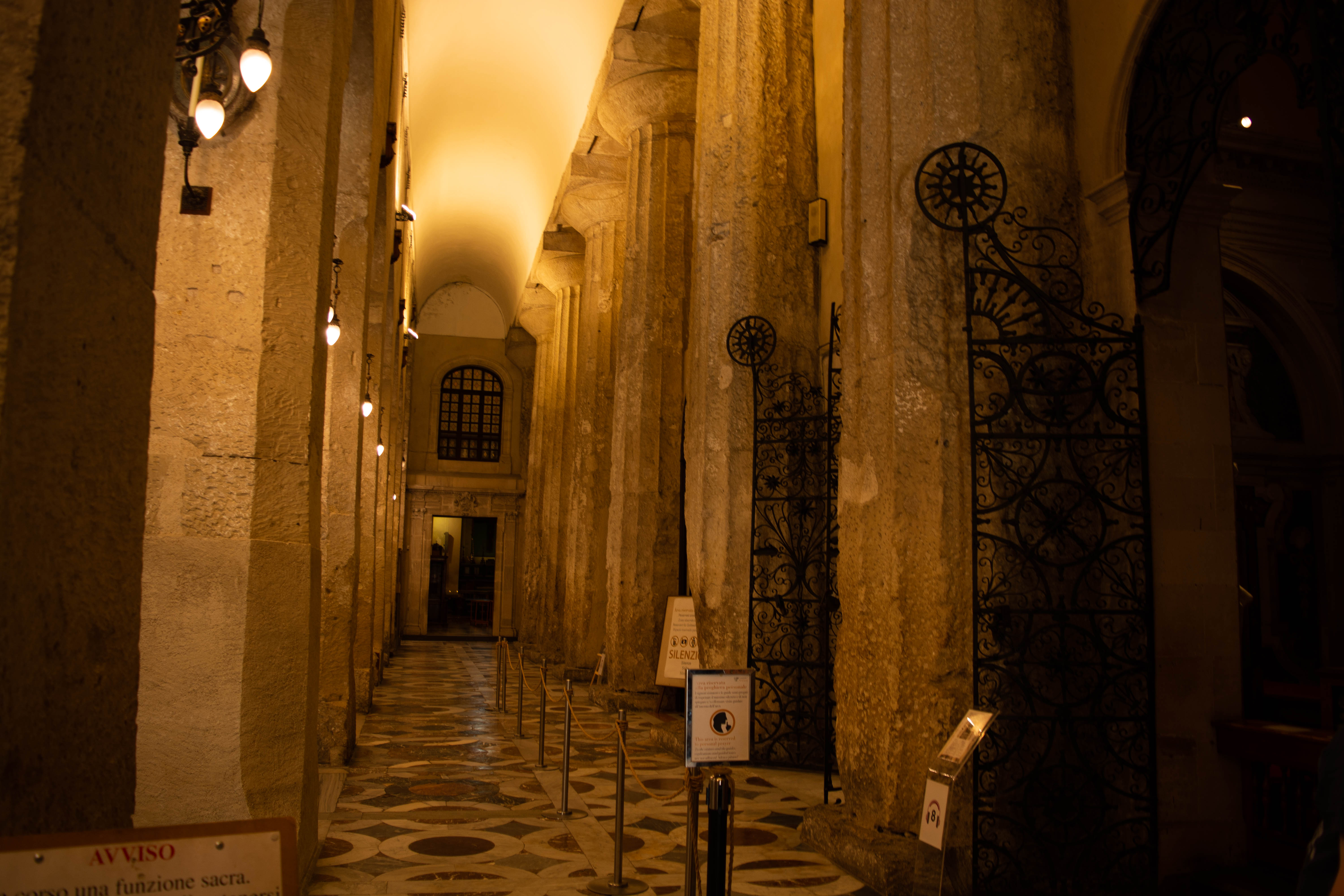
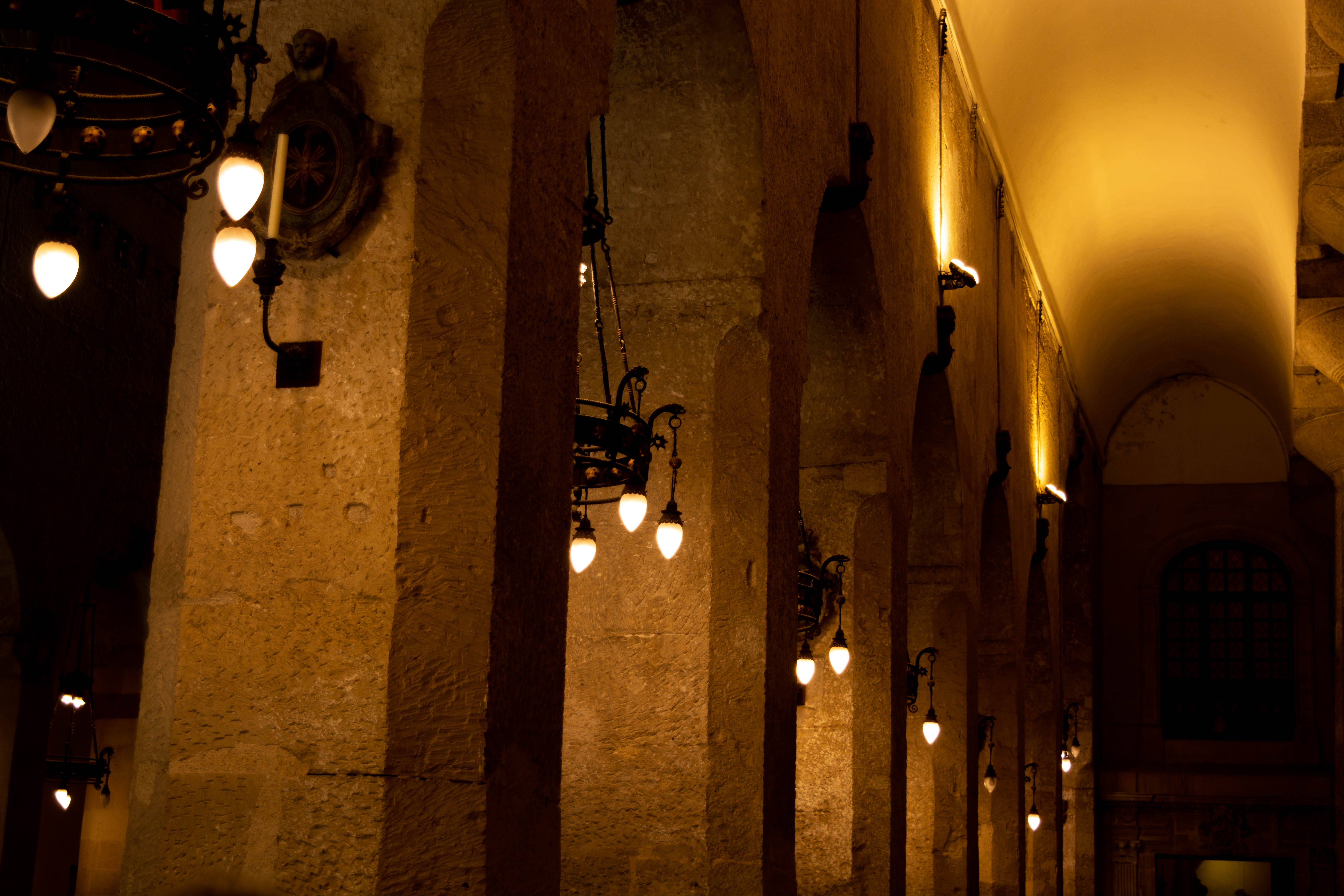
The floor has a familiar marble pattern, similar to the cathedrals and chapels we saw in Palermo on Day 1:
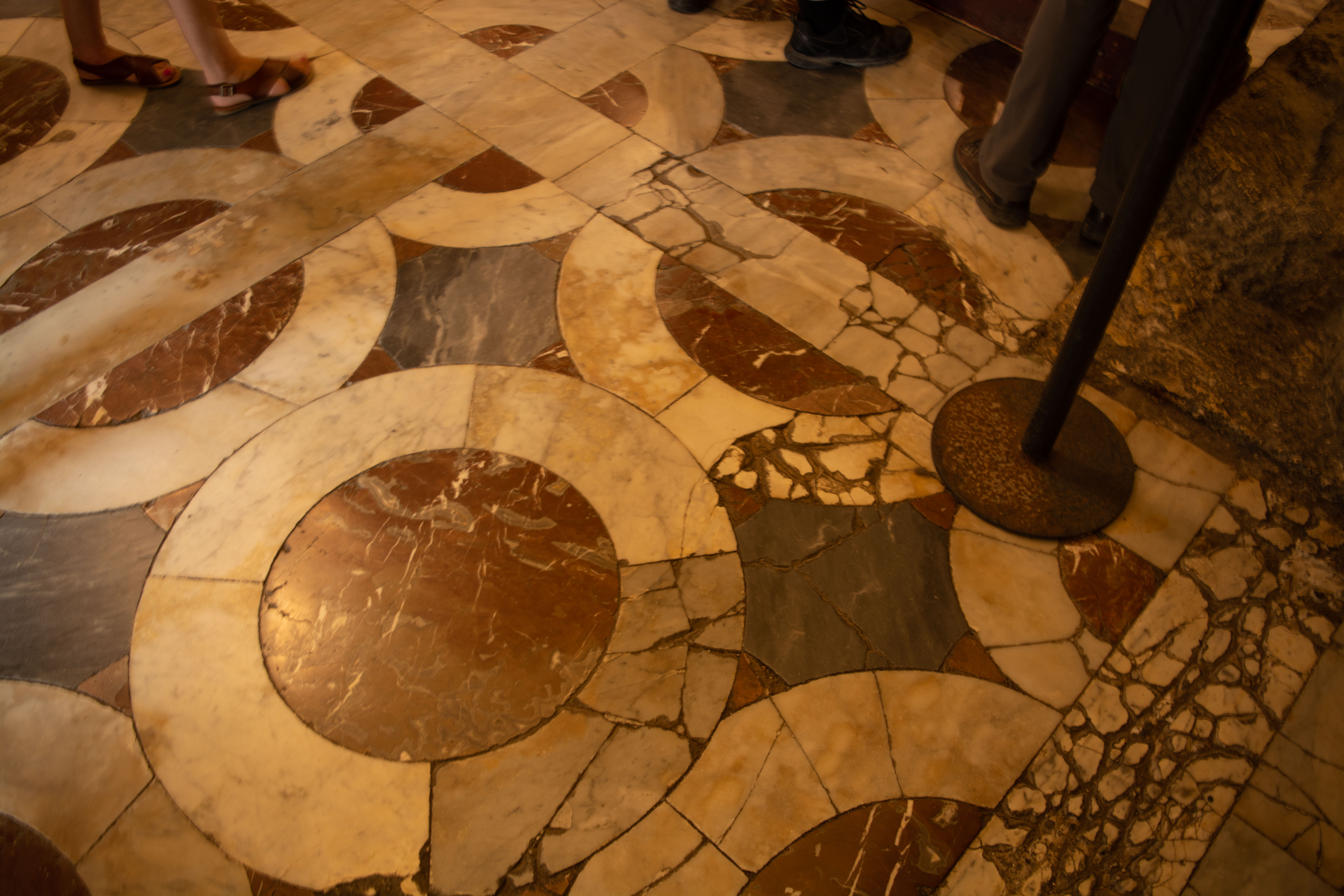
Outside the cathedral is a rectangular marking on the ground:
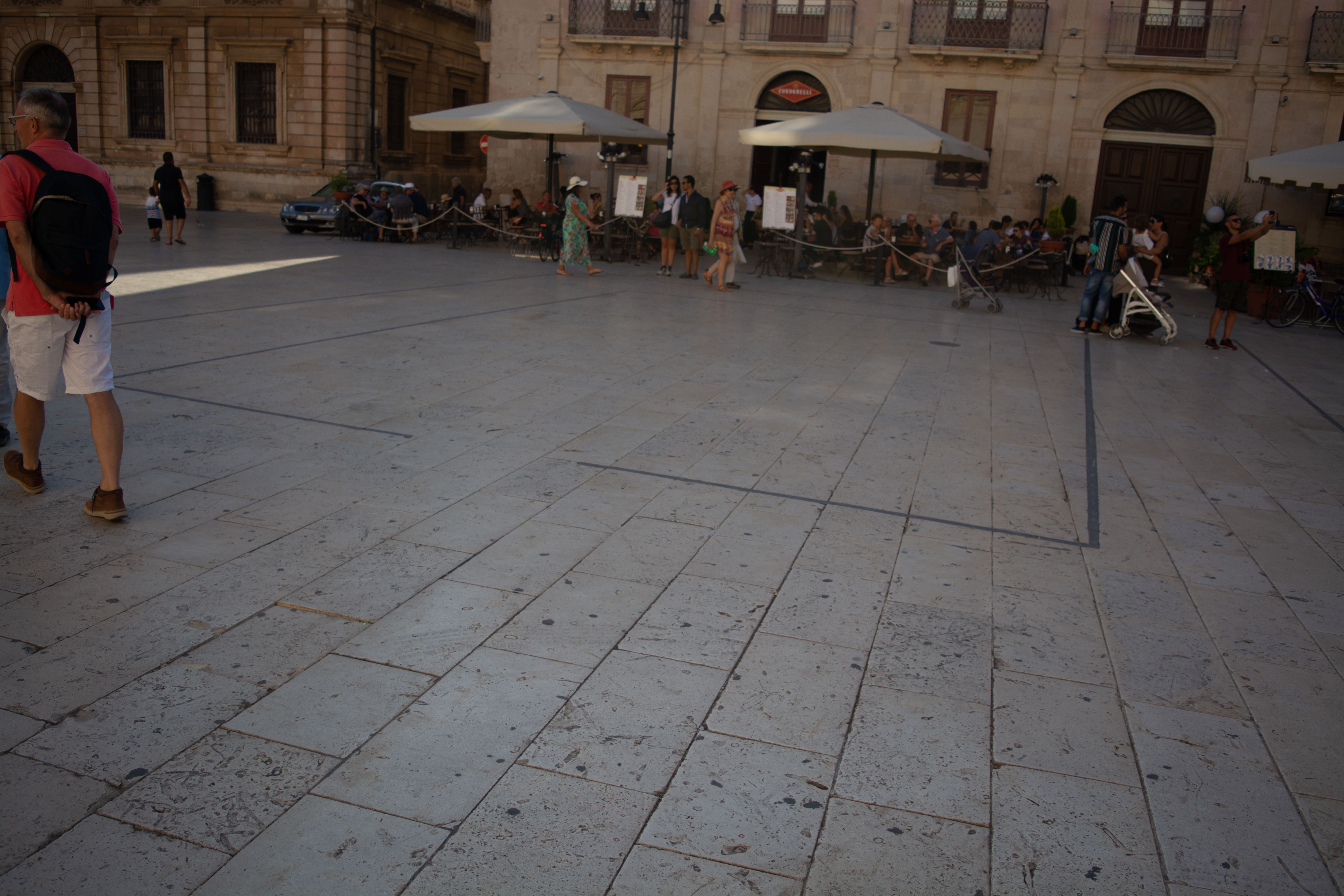
Denise explained that this marking is meant to show the site of a previously-excavated shrine. The shrine was built on this hilltop by the Sikels, the indigenous people of this island, at a time before recorded history began. The exact date of the shrine’s construction is unknown but may have been around 1,100 BC. When the Greeks colonized the area they built the Temple of Athena and demolished the shrine. The Christians then converted the Temple of Athena into a Cathedral, which is still in use today (although it was also used as a mosque for a few centuries). So it would seem that the same hilltop has been used as the city’s spiritual center for the entire time that the island has been inhabited, no matter which religion the people followed at the time. Across the vast reaches of history, the people of Syracuse have always come to worship on the same spot.
With such a long and storied history we would expect to find it mentioned by many writers across those 30-plus centuries, and indeed we do. Plato (author of The Republic) visited Syracuse in 398 BC and mentions the temple in his writing. About a decade later Plato would go on to be the founder of the Academy at Athens, the world’s first institution of higher learning. His star pupil, Aristotle, is familiar to many.
Several centuries later Cicero, the famous Roman Senator, mentions the temple in 70 BC. He specifically mentions some gold and ivory that had been stolen from it. Cicero was an ardent advocate of preserving the Republican tradition at a time when Julius Caesar was actively trying to tear it down and replace it with a dictatorship. When Julius Caesar was assassinated, Cicero tells us that Brutus (et tu, Brute?) loudly invoked his name after pulling the dagger from Caesar’s dying body:
“When Caesar was slain, says he, Marcus Brutus immediately lifted up on high his bloody dagger, and called on Cicero by name; and congratulated him on liberty being recovered” (Second Philippic against Antony).
In the following century, the apostle Paul came here and stayed for 3 days (Acts 28:12).
The Cathedral also houses several relics of St Lucy, the city’s patron saint. She was once buried here but most of her relics have since been moved.
Across from the cathedral is the National Archeological Museum, which unfortunately was not open at the time:
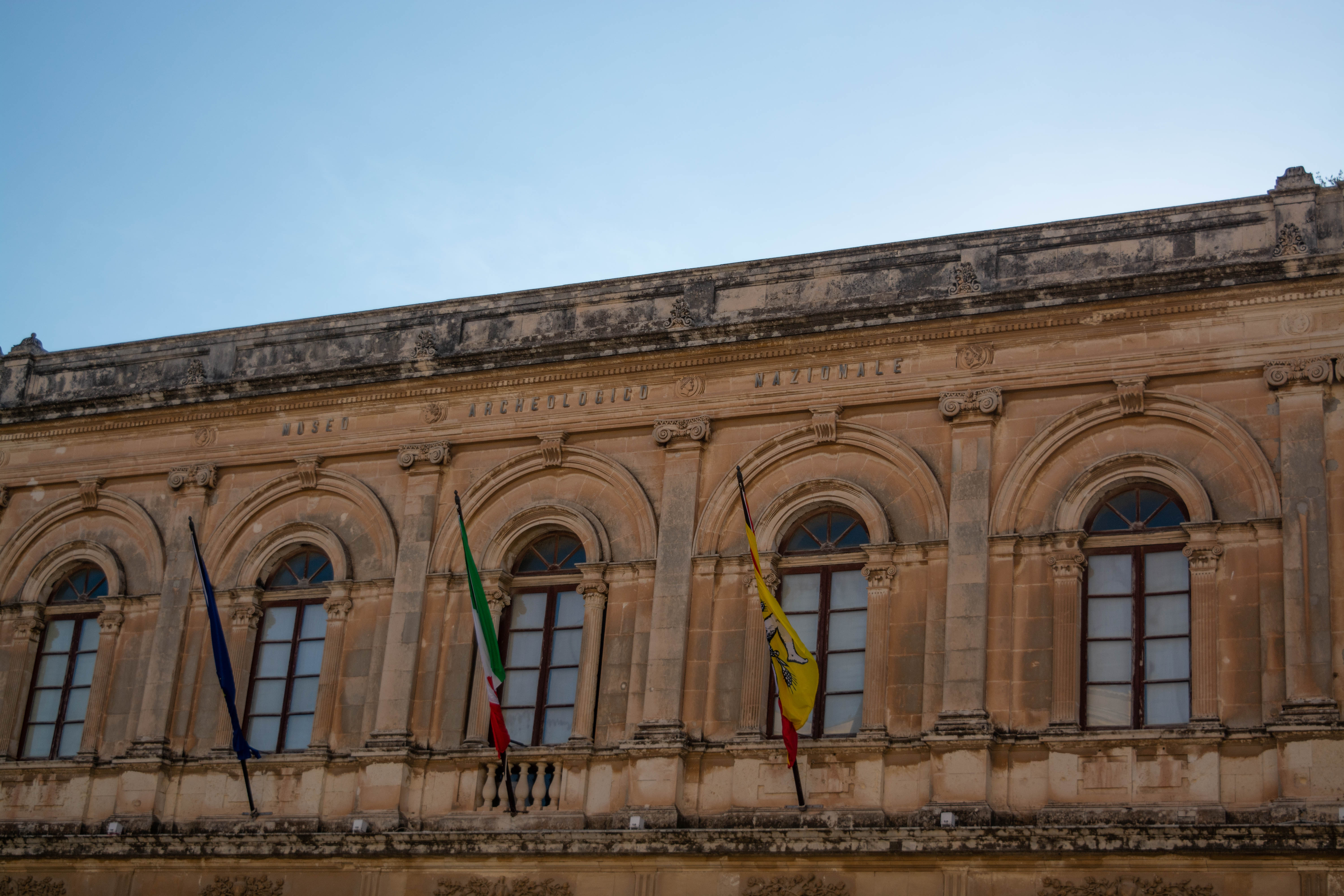
The island is also home to a freshwater spring. This ready source of clean drinking water is probably what attracted the earliest people of Syracuse to settle here. According to Greek mythology a nymph who fled here was transformed into the spring by the goddess Artemis. The large plant you see growing in the spring’s center is wild papyrus, which was used by the ancient Egyptians as a writing surface as early as 3,100 BC:
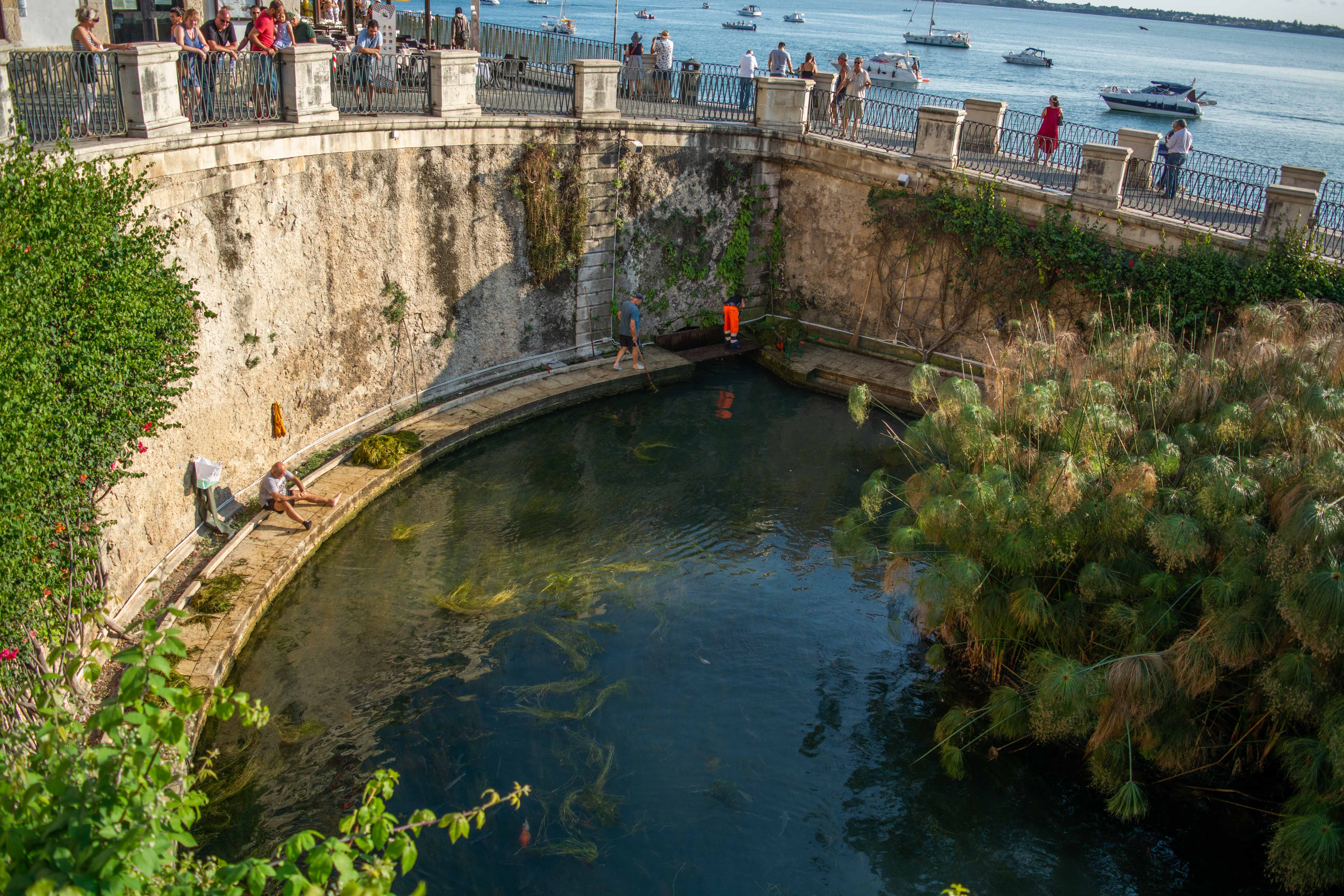
Back in the lobby of the hotel, we discovered that it was built around the remains of a 4th-century Christian church:
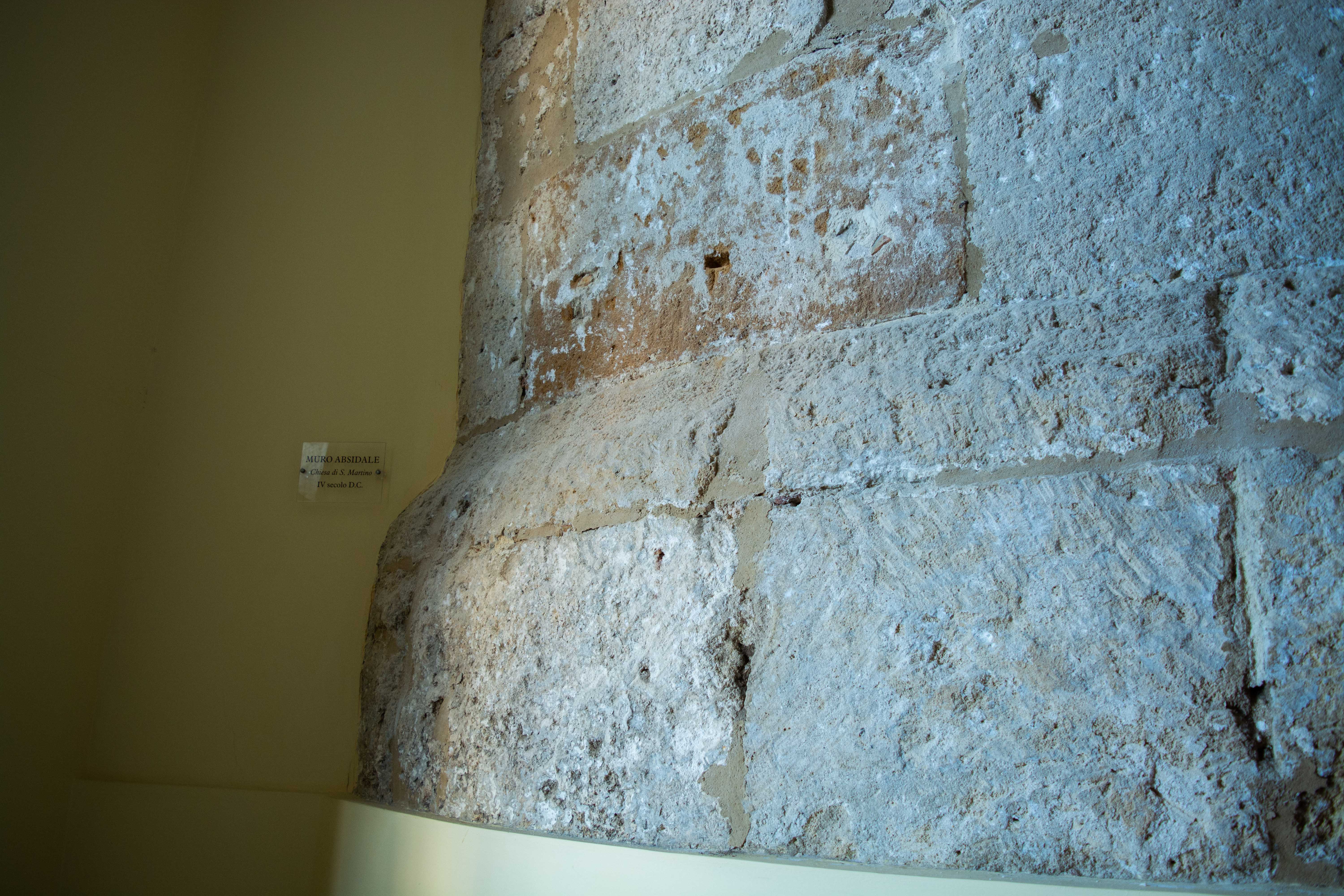
From the lobby of the hotel, we were treated to a beautiful seaside sunset before dinner:
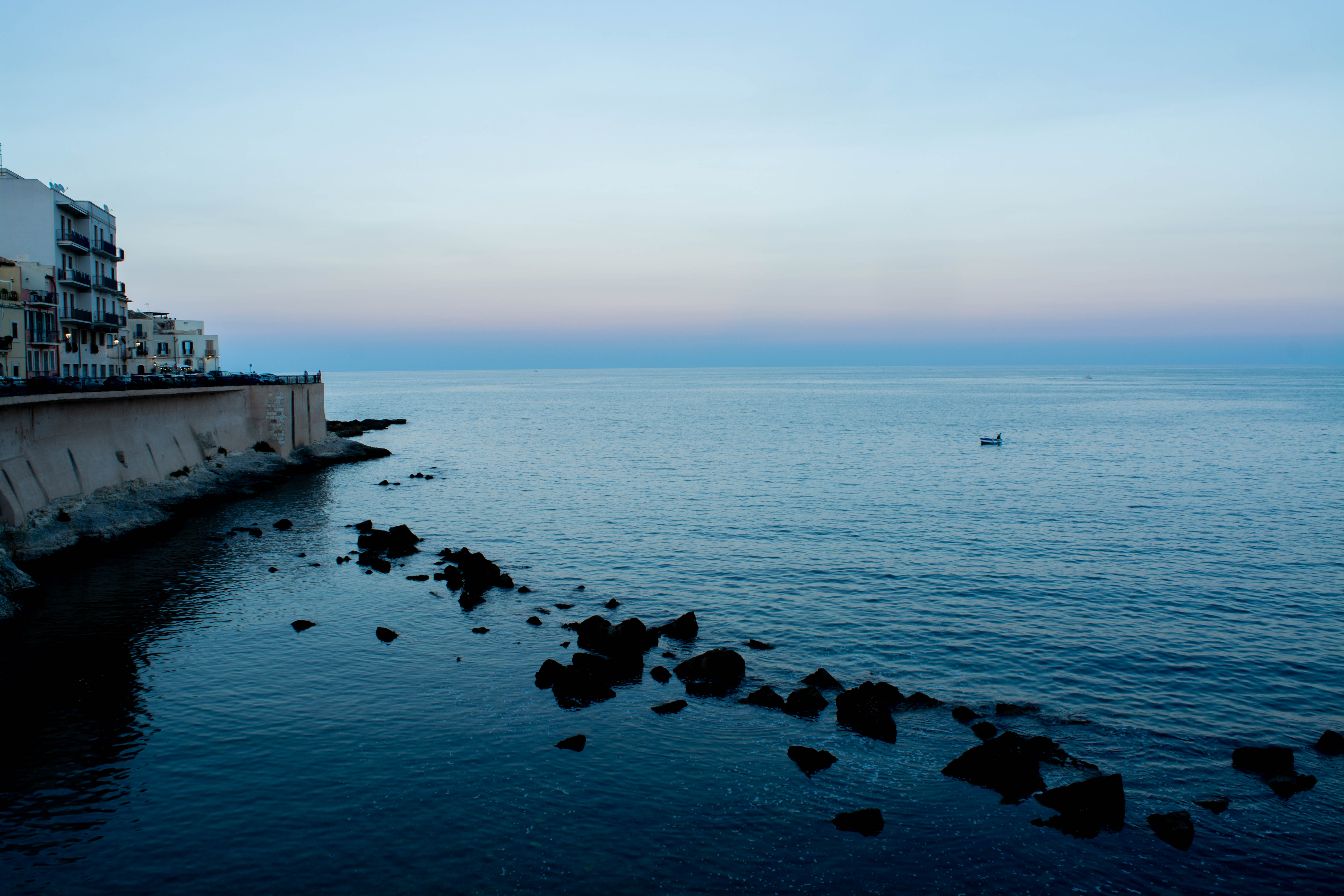
This bay was once the site of a vicious sea battle during the Siege of Syracuse in 213-212 BC. The Romans were trying to take the city away from its King, who was an ally of Carthage. This was at approximately the same time that the famous Carthaginian general Hannibal was running rampant through Roman territory in mainland Italy after successfully bringing his war elephants over the Alps. Here in Syracuse the Romans attempted to conquer the city with some equally impressive weapons, including a floating siege tower.
But the people of Syracuse were defiant. They held out for many months inside the walls of their city, aided by the ingenuity of their most brilliant thinker: Archimedes. He designed an array of super-weapons to help the city withstand the Roman onslaught. These included a giant claw, which could supposedly lift Roman ships out of the water. Legend has it that he also designed and built a giant solar ray which could set the Roman ships on fire. This idea was tested (without success) in the widely-viewed American television series “Mythbusters.” Archimedes also developed an early approximation of the value of pi and proved that the equation for the area of a circle was A=πr^2. Archimedes is further credited with shouting “Eureka!” after spilling water from his bathtub here in Syracuse.
When the Romans finally broke through the Syracusan defenses, the Roman commander Marcellus ordered that Archimedes be taken alive. Unfortunately the Roman soldier who caught Archimedes disobeyed the order and slaughtered him. Cicero later visited Archimedes’ tomb during his trip to Syracuse, and he mentions that it had a sphere and a cylinder on top in honor of Archimedes’ mathematical discoveries. Unfortunately the tomb was abandoned and forgotten sometime after Cicero departed, and today its exact location is still unknown.
After a magnificent dinner and some excellent Italian wine, we headed back to the hotel for the night. Dad and I enjoyed some Cuban cigars on the balcony while we watched the activity of the city below.
On the morning of Day 5, the sunrise we were greeted with was just as beautiful as the sunset the night before:
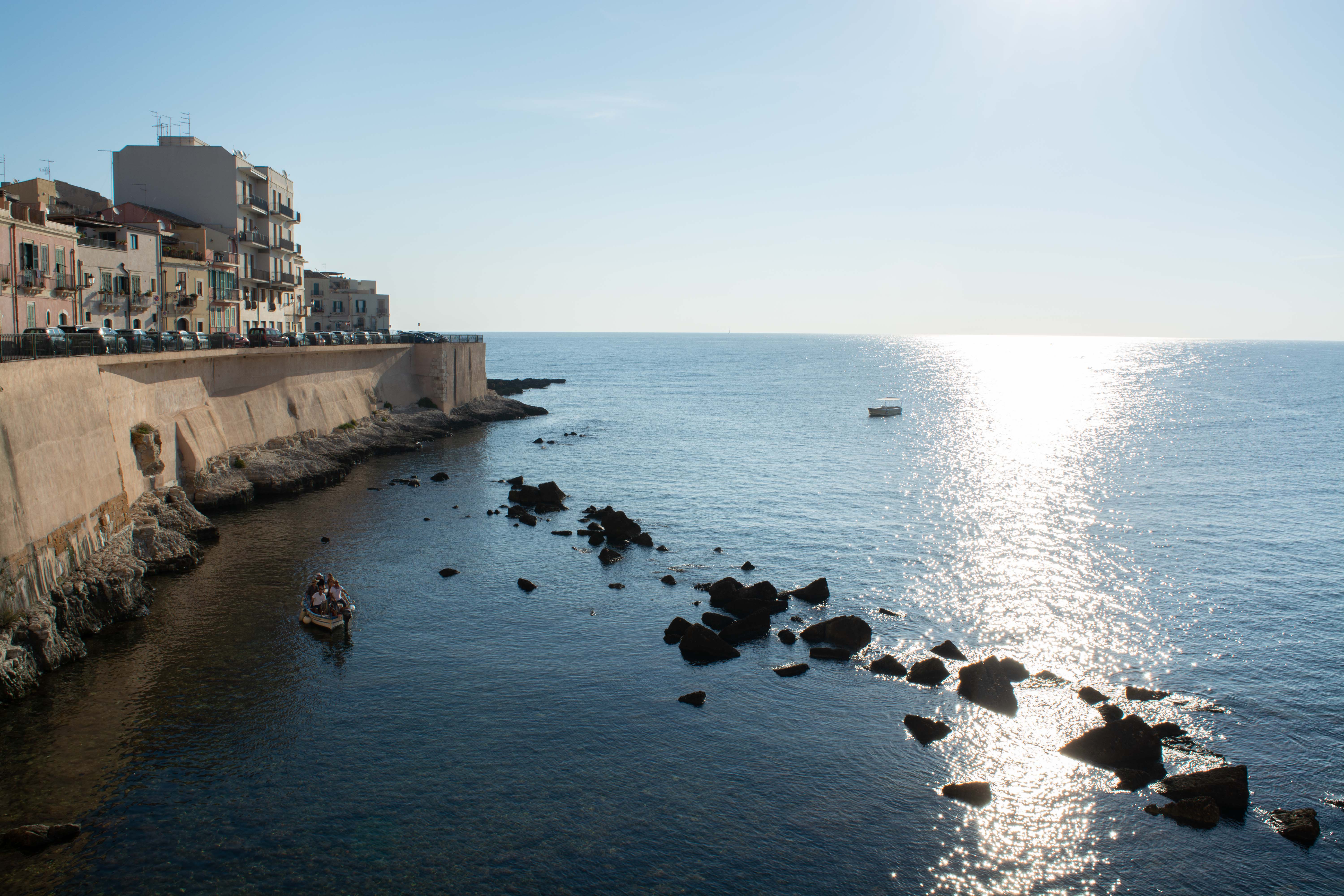
Today we would be visiting the Archaeological Park, which holds a Greek theater and a Roman amphitheater. After a short bus ride over to the site, we first came upon some ancient stone sarcophagi which date to the 500s BC:
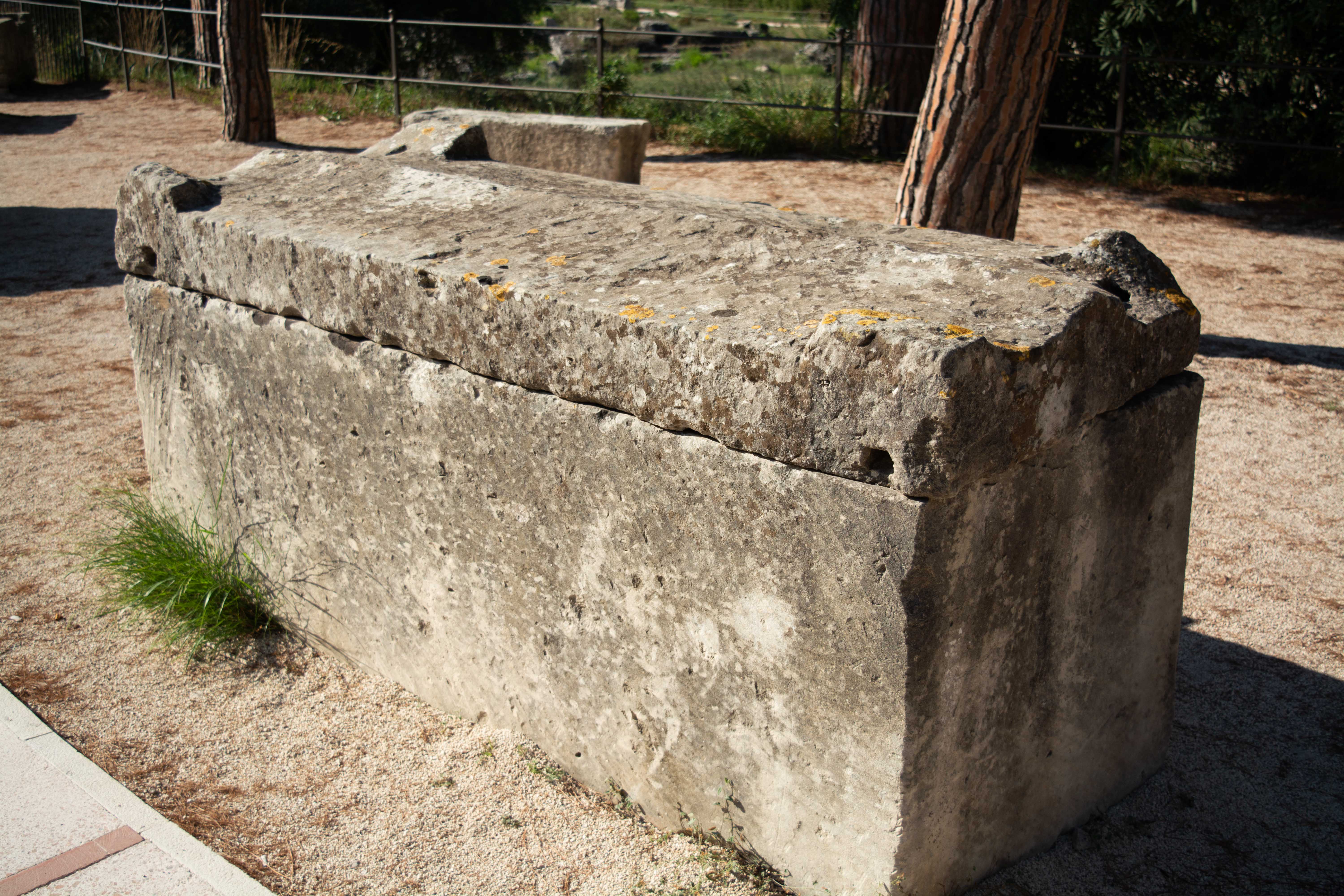
The Roman amphitheater is a large outdoor arena where Gladiators would once have fought. It had seating for 15,000 spectators:
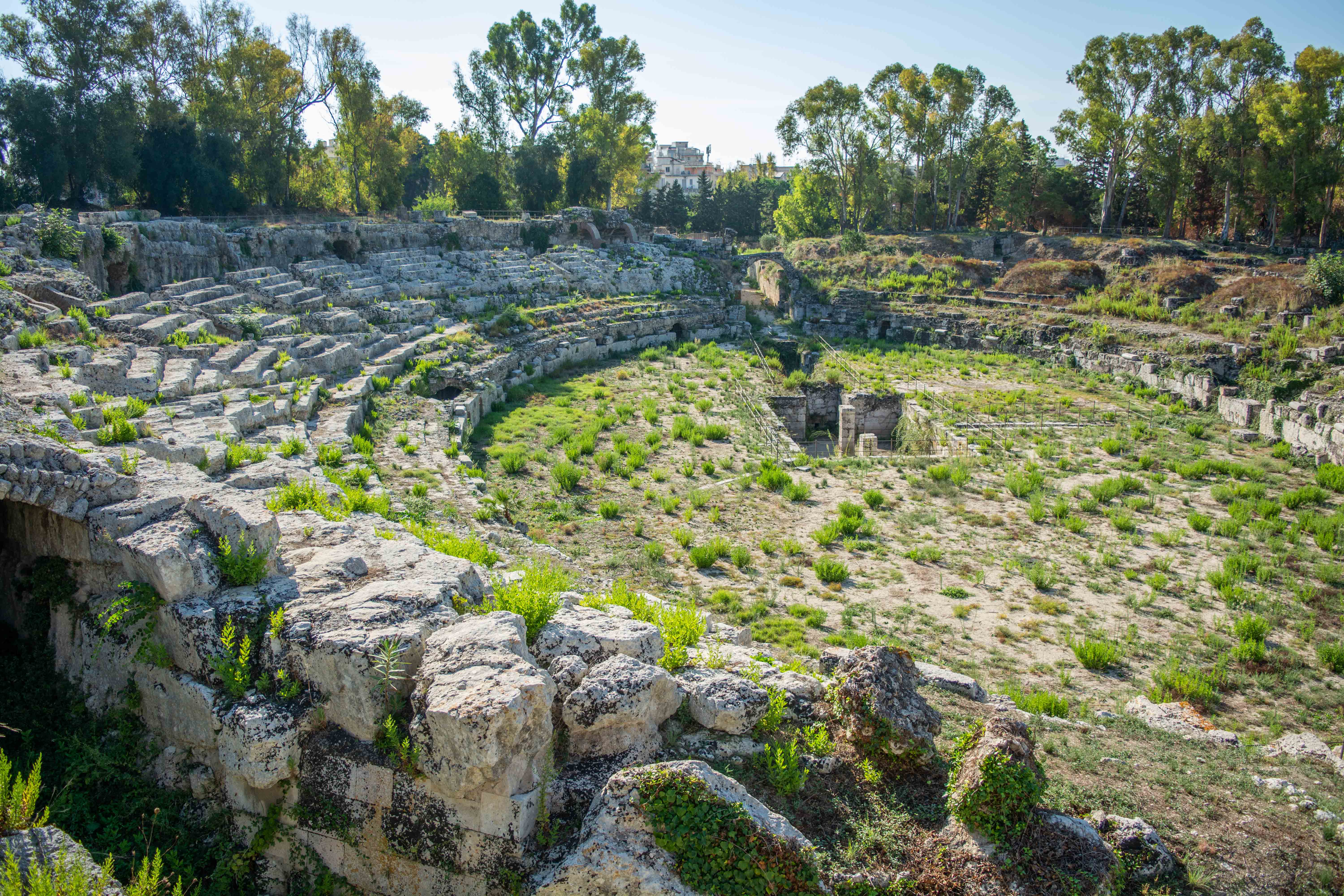
The park is also home to an ancient Greek quarry, where limestone for the temples would have been obtained. The quarry is very deep and its steep sides are quite impressive:
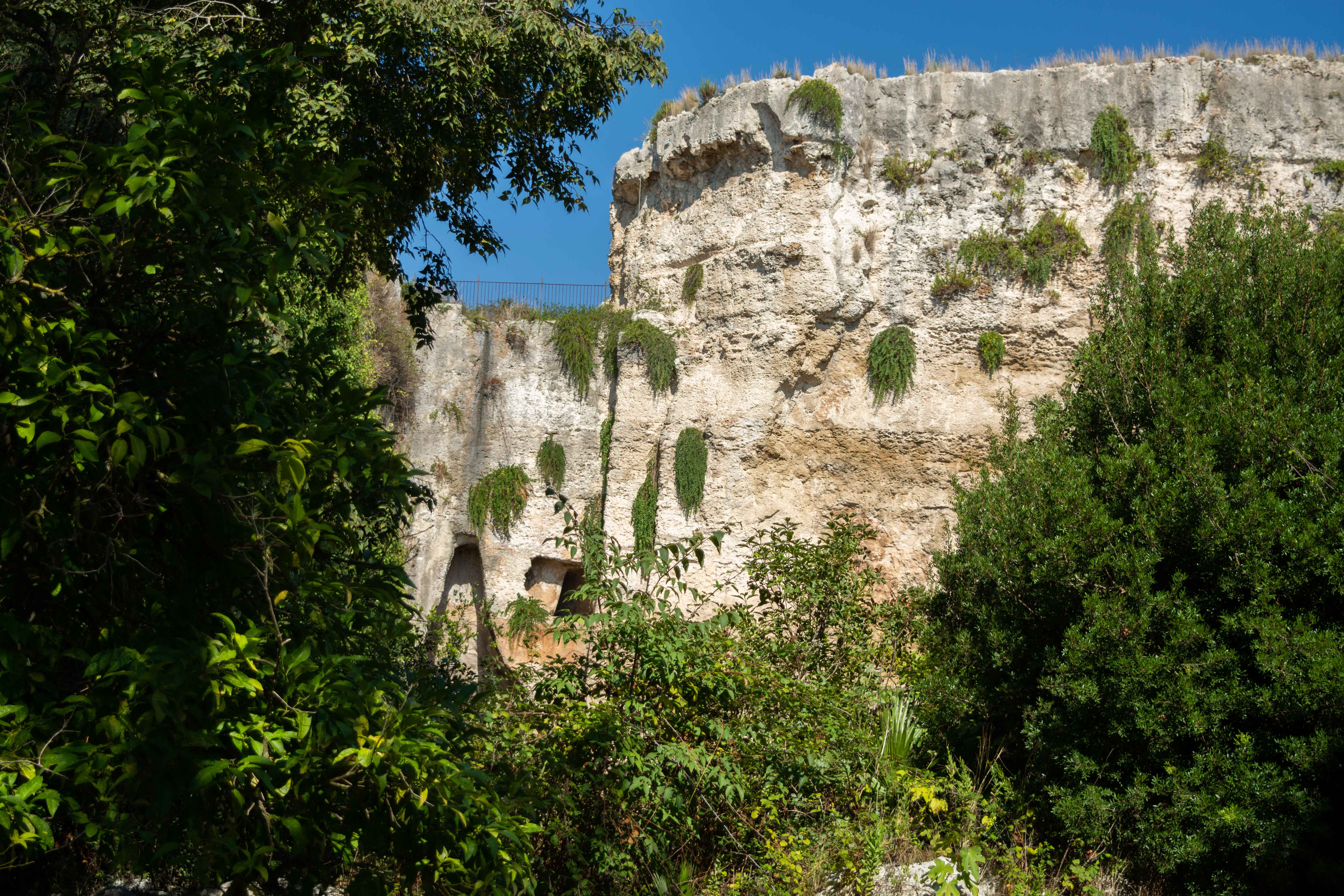
One of the main features of the quarry is a cave known as the Ear of Dionysius. This long and narrow cave has a winding path similar to a human ear:
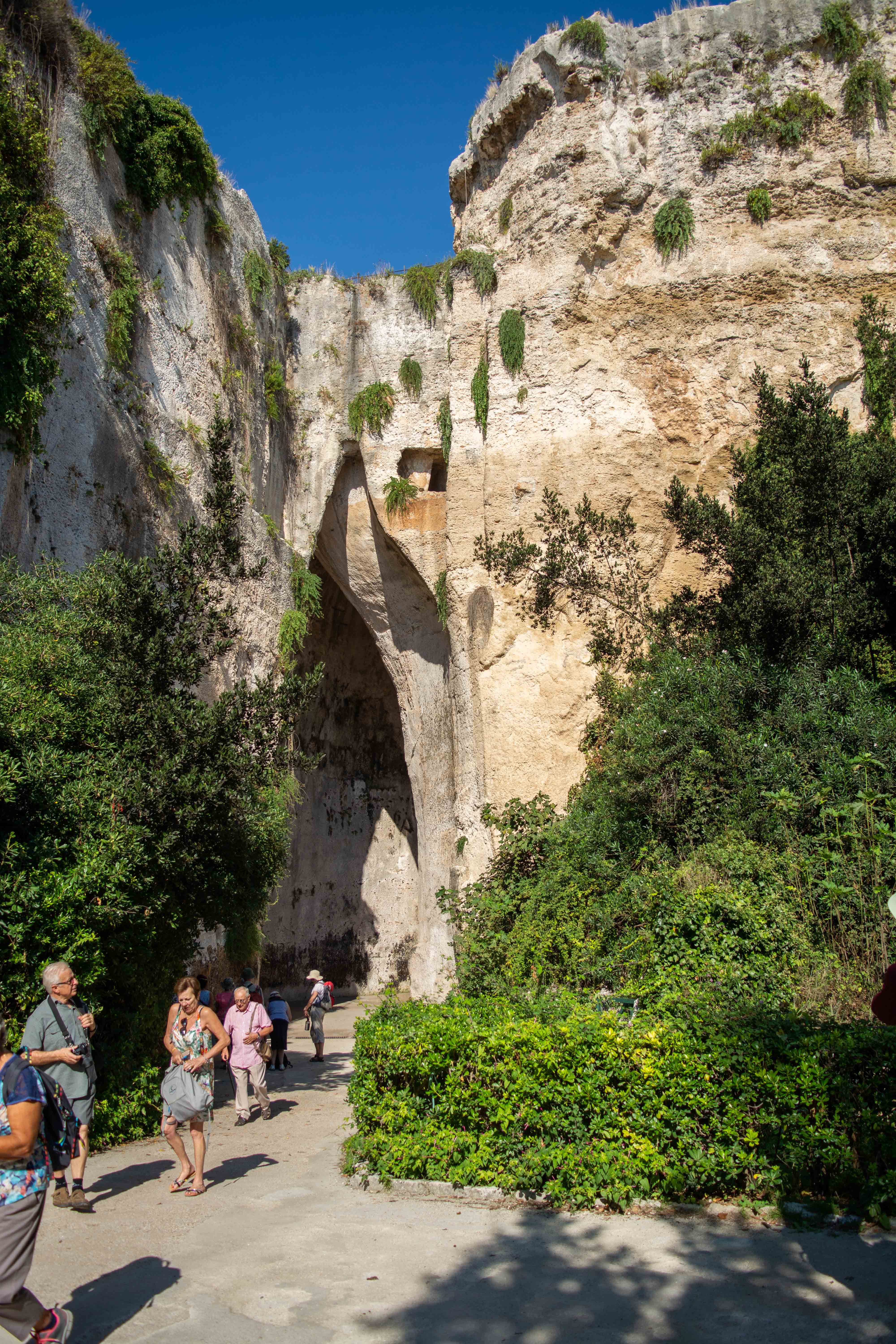
The acoustics in here are quite impressive, and while we were inside our local guide treated us to some songs and verses from a local Italian drama.
When the Greeks excavated this area they cut out the softer stone first and left the harder stone standing in columns to support the roof. An earthquake in 1693 caused the roof to collapse, leaving the columns standing high and isolated above the floor:
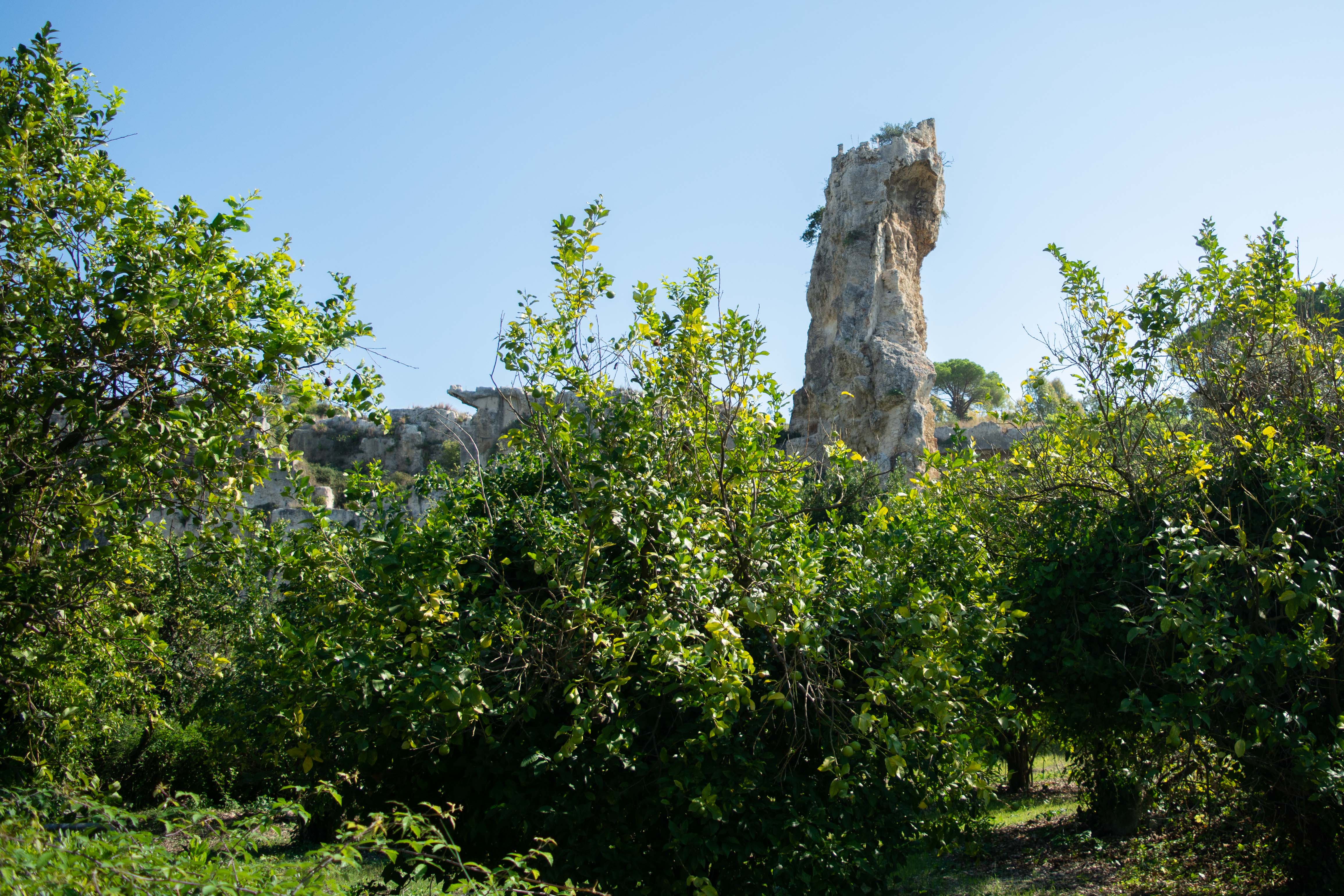
Legend has it that those unfortunate Athenian soldiers (about 7,000 in number) who survived the disastrous invasion of Sicily (mentioned in Day 2’s post) were sent to this quarry to labor as slaves. Most of them died down here.
The most awe-inspiring part of the park, however, is the ancient Greek theater which was built in the late 400s BC:
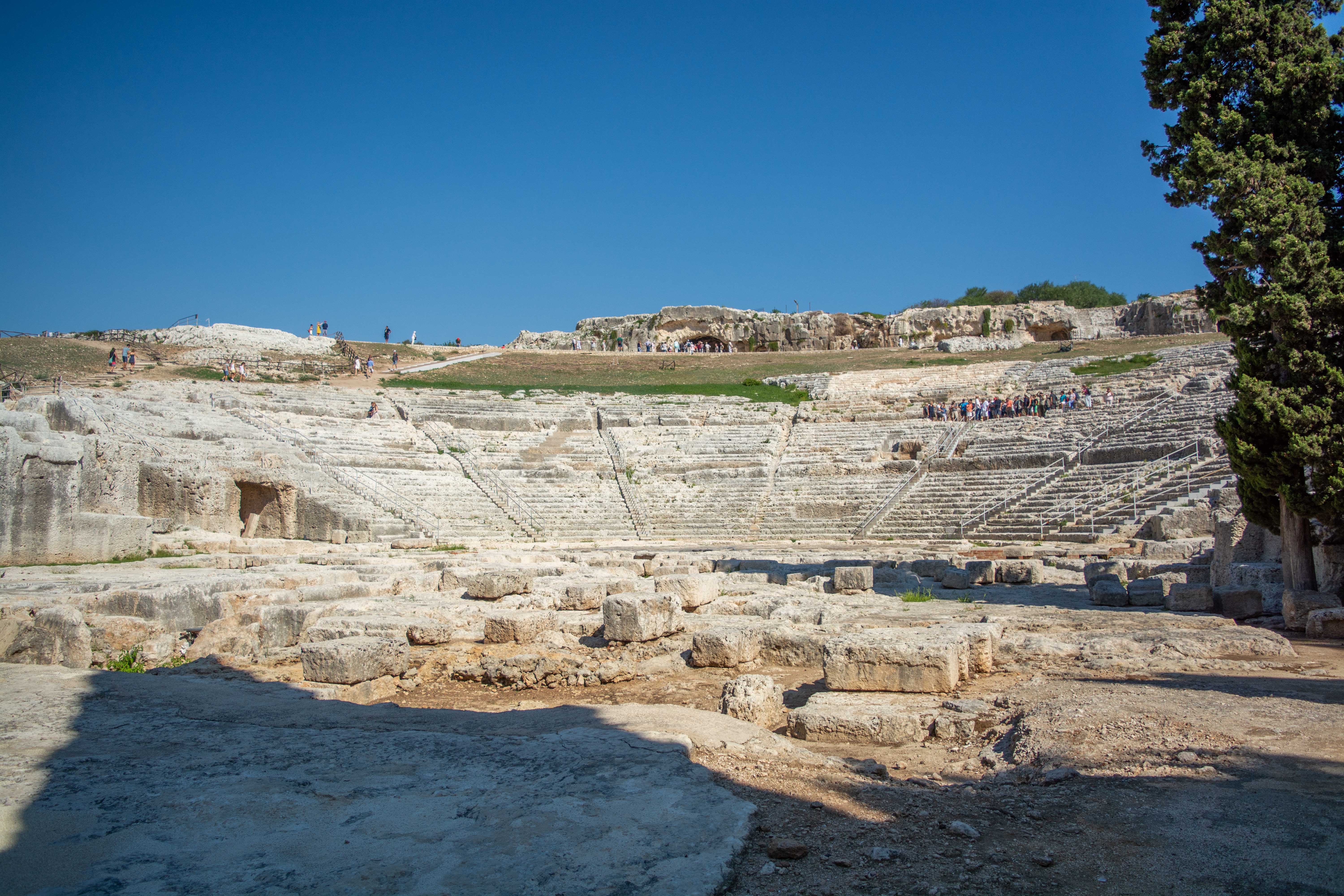
Located high on a hill overlooking the sea, this is a place where dramas and plays would have been acted out. It has seating for 18,000 spectators. The theater was not built from blocks, it was carved by hand out of solid rock with simple iron tools. Despite being over 2,500 years old it is still in use today. Every summer the theater is used to host plays, musical concerts, and singing performances. Tickets for these events usually sell out early.
At the top of the theater are the remains of a church and a Spanish water mill, which can be seen on the left side of this image:
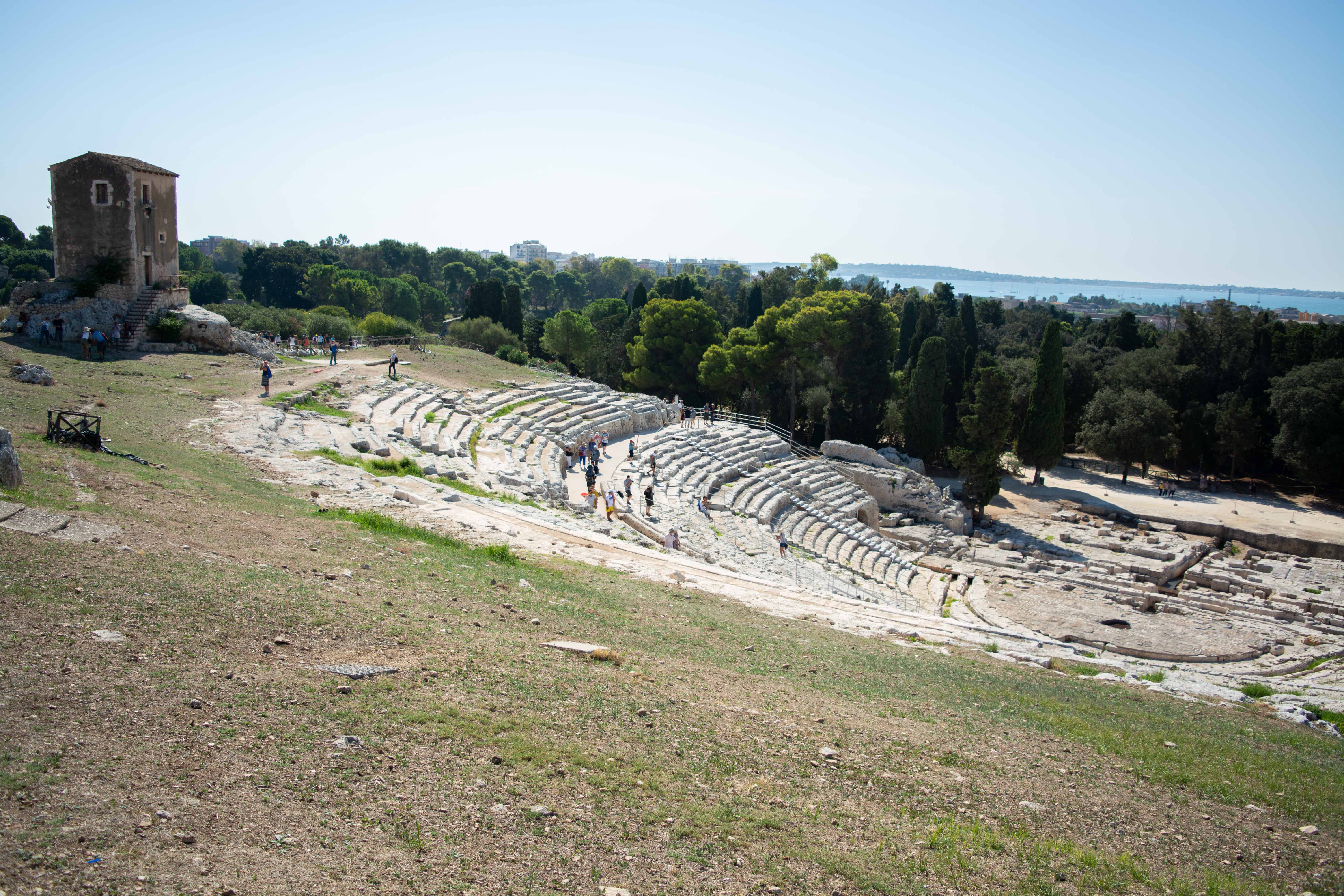
There is also a cool and refreshing spring:

And the remains of some Christian burials cut into the rock:
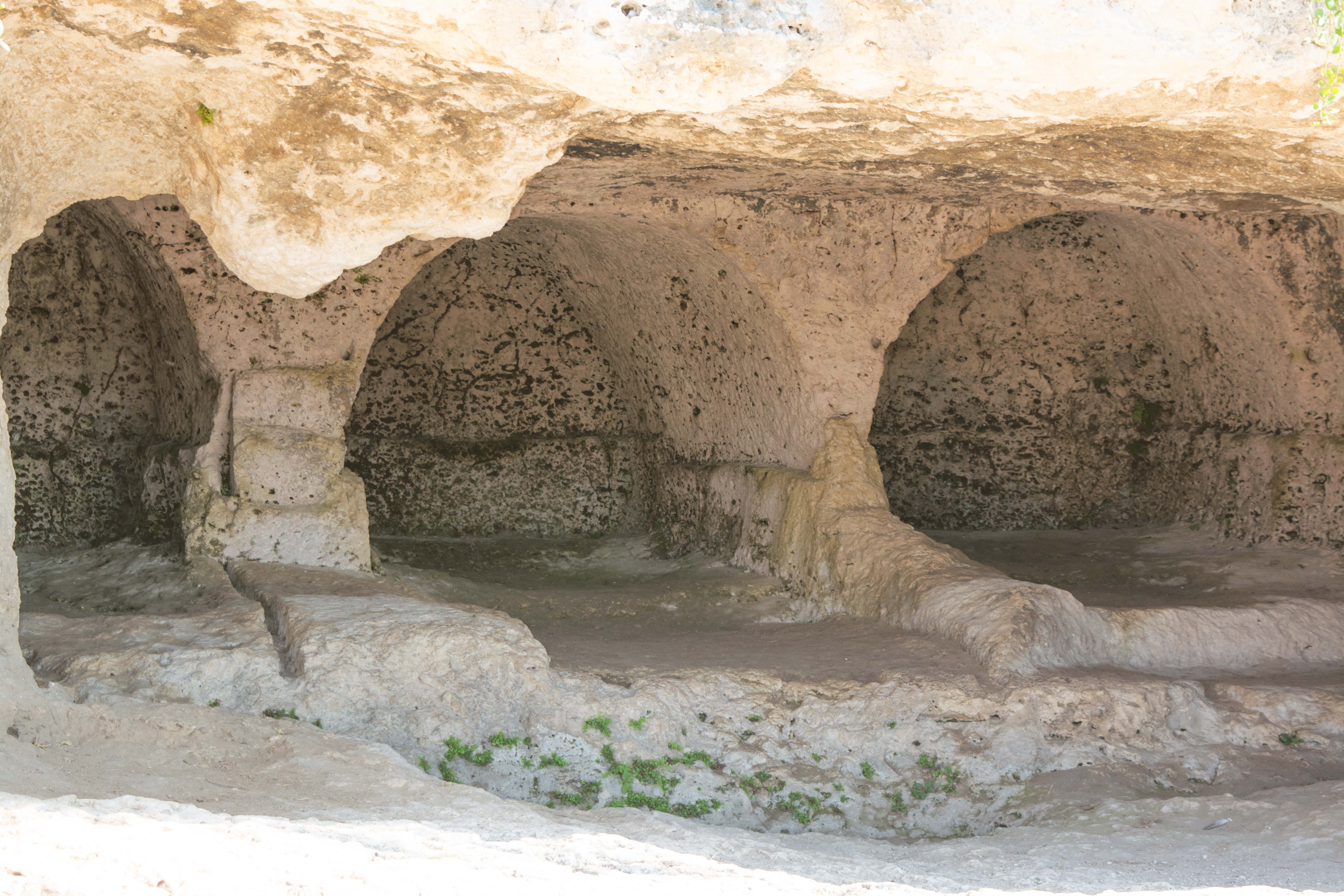
After saying goodbye to our local guide we headed over to the nearby Paolo Orsi Archaeological Museum. During this time Dad and I stepped away briefly to visit the Shrine of the Madonna of Tears. This is a shrine built to house and honor a portrait of Mary which, in the mid-20th century, cried real human tears despite no discoverable source for them. The shrine is shaped like a giant tear drop:
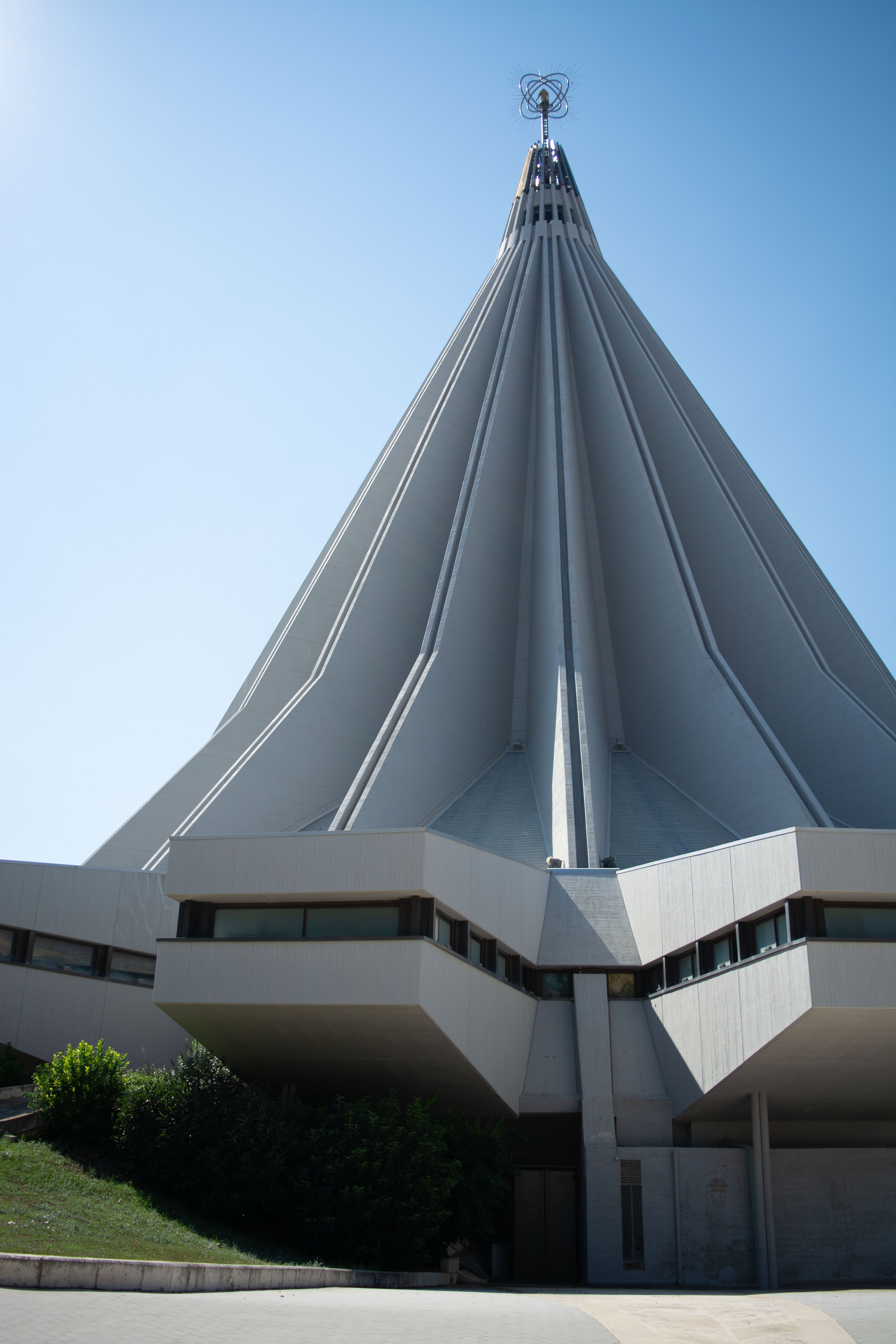
Inside the archaeological museum was an early Christian sarcophagus:
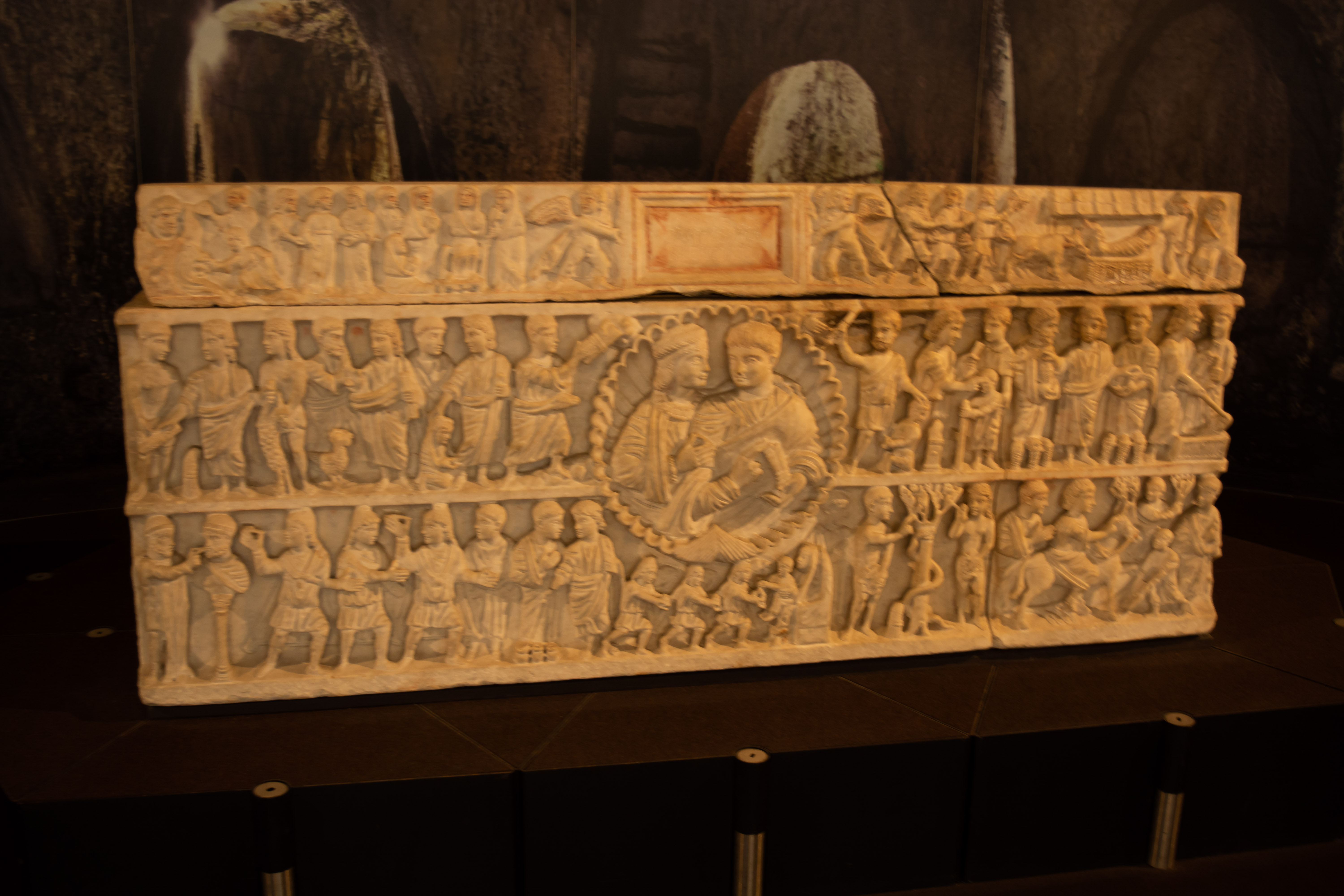
And some ancient Roman rings:
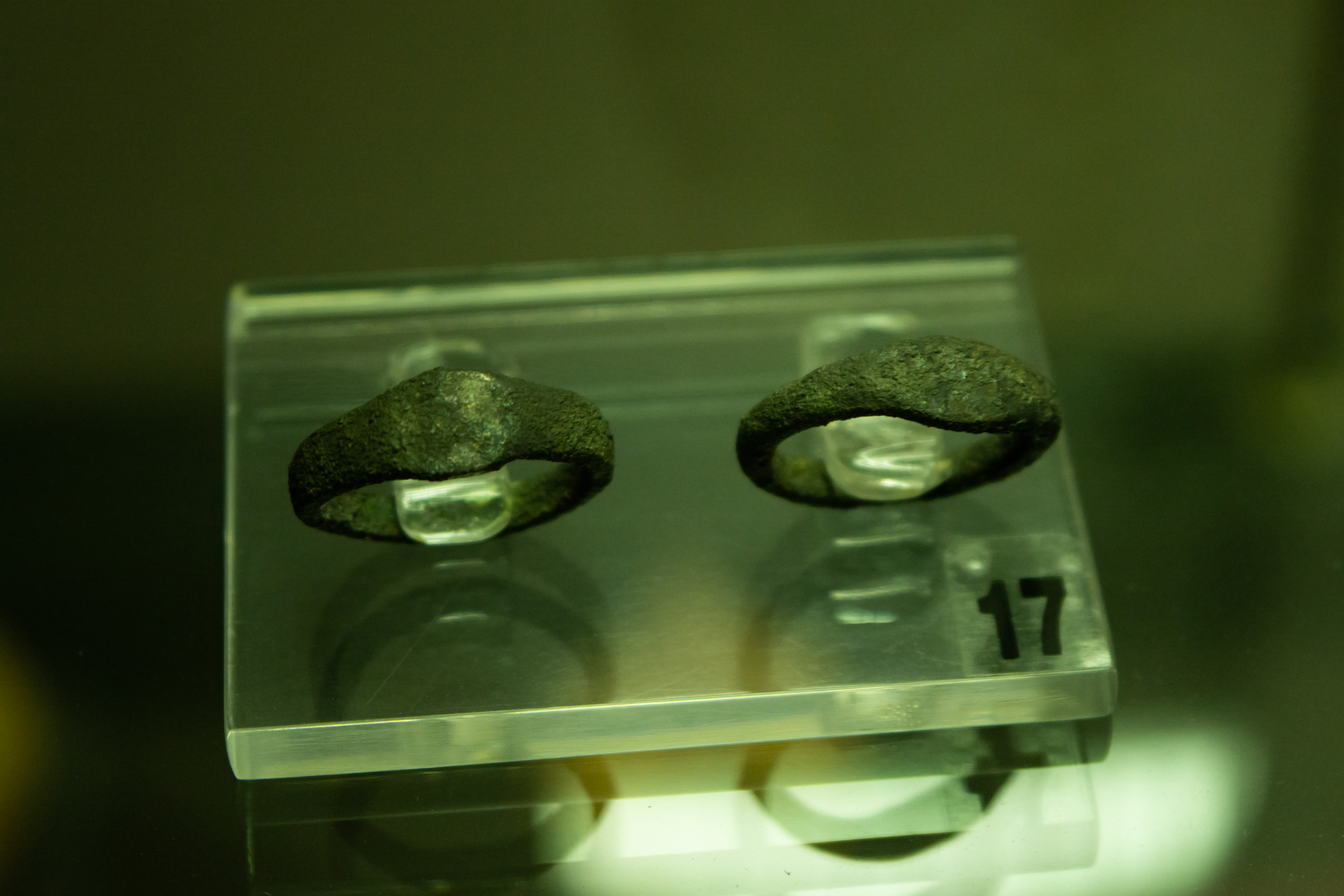
This is exhibit, known as “The Tomb of the Saint,” was beautifully illuminated but did not name the saint who was buried here:
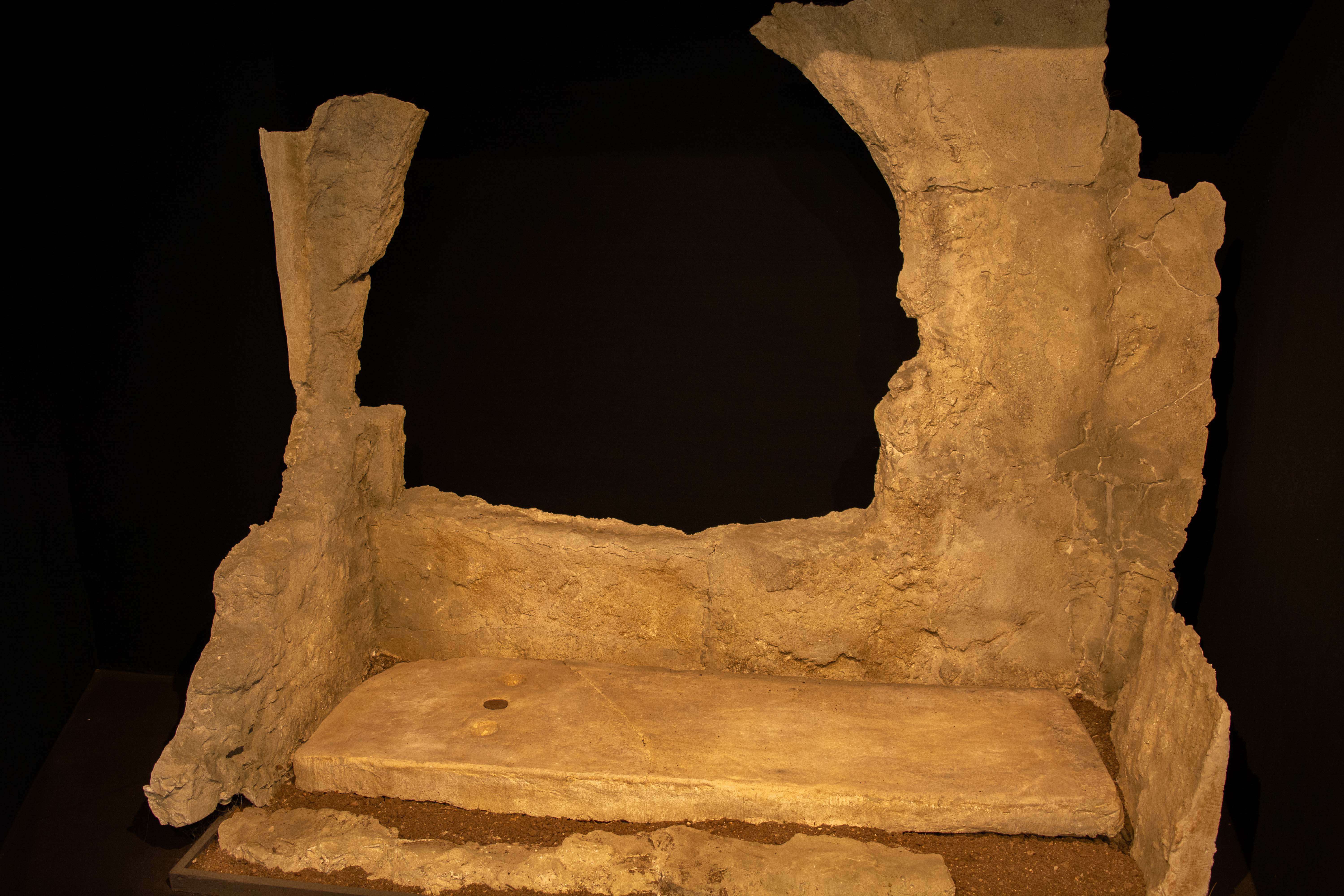
There was also a hanging clay pot with some ancient Greek writing on it:
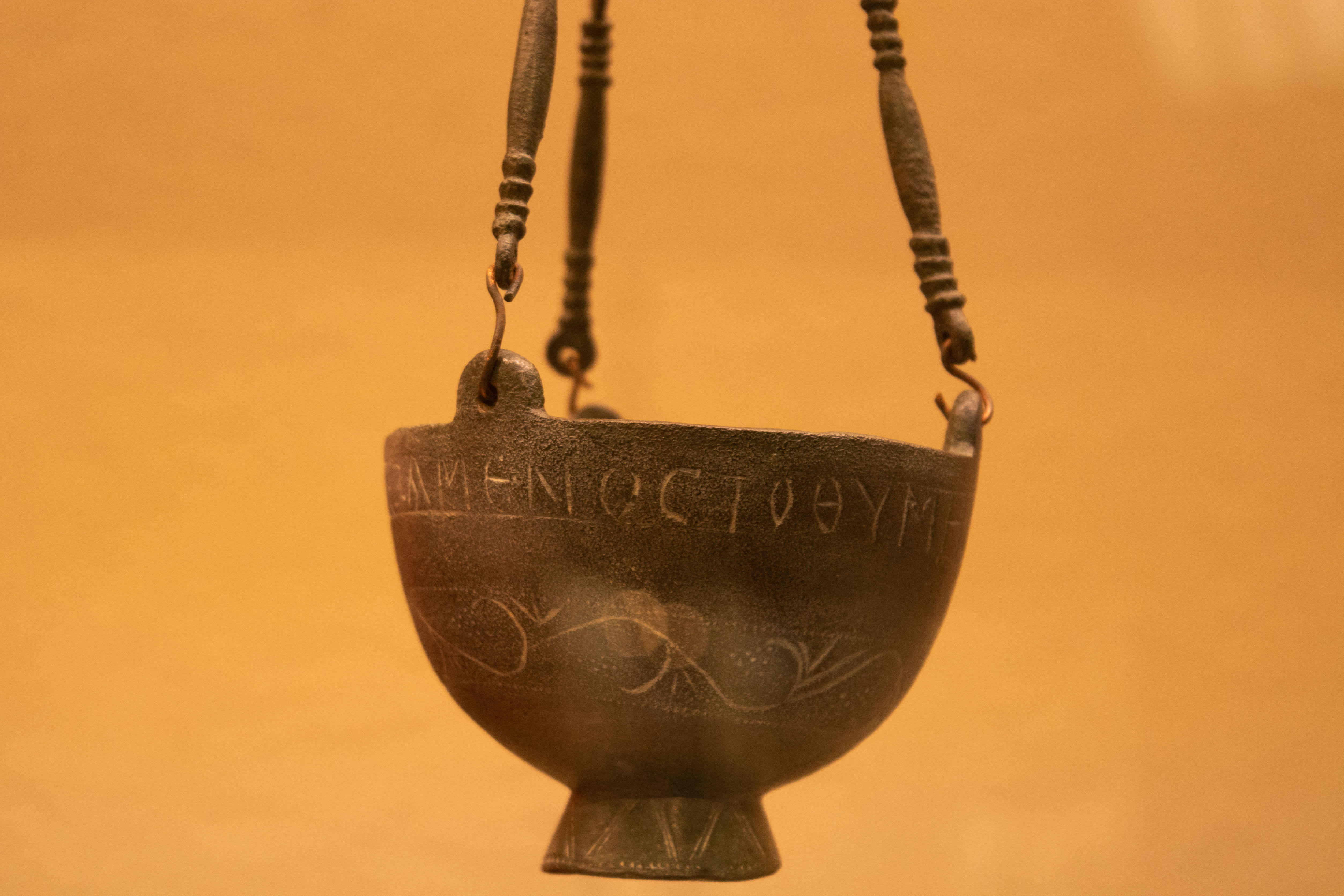
And an assortment of metal belt buckles:
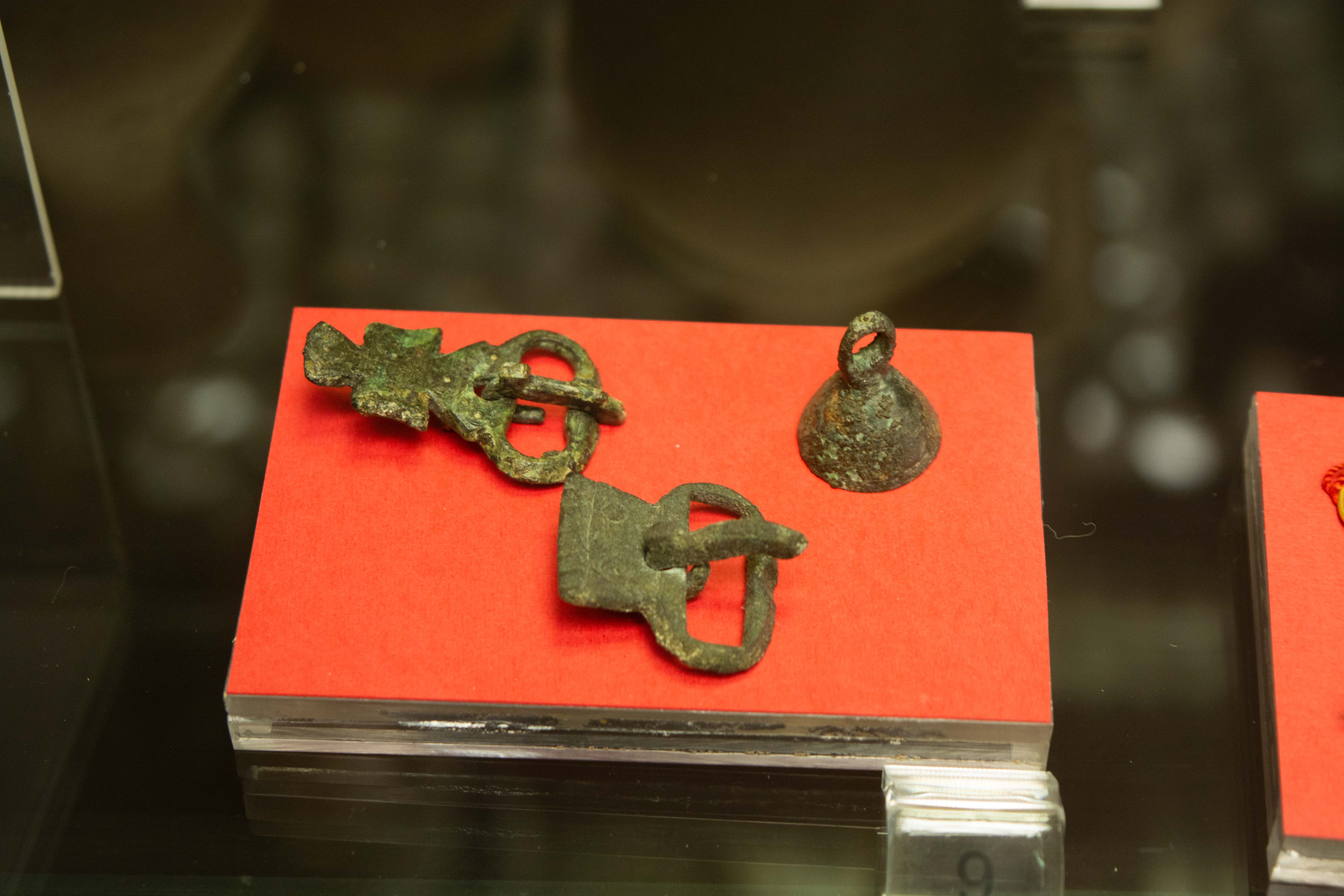
Another exhibit housed some ancient Roman signet rings:
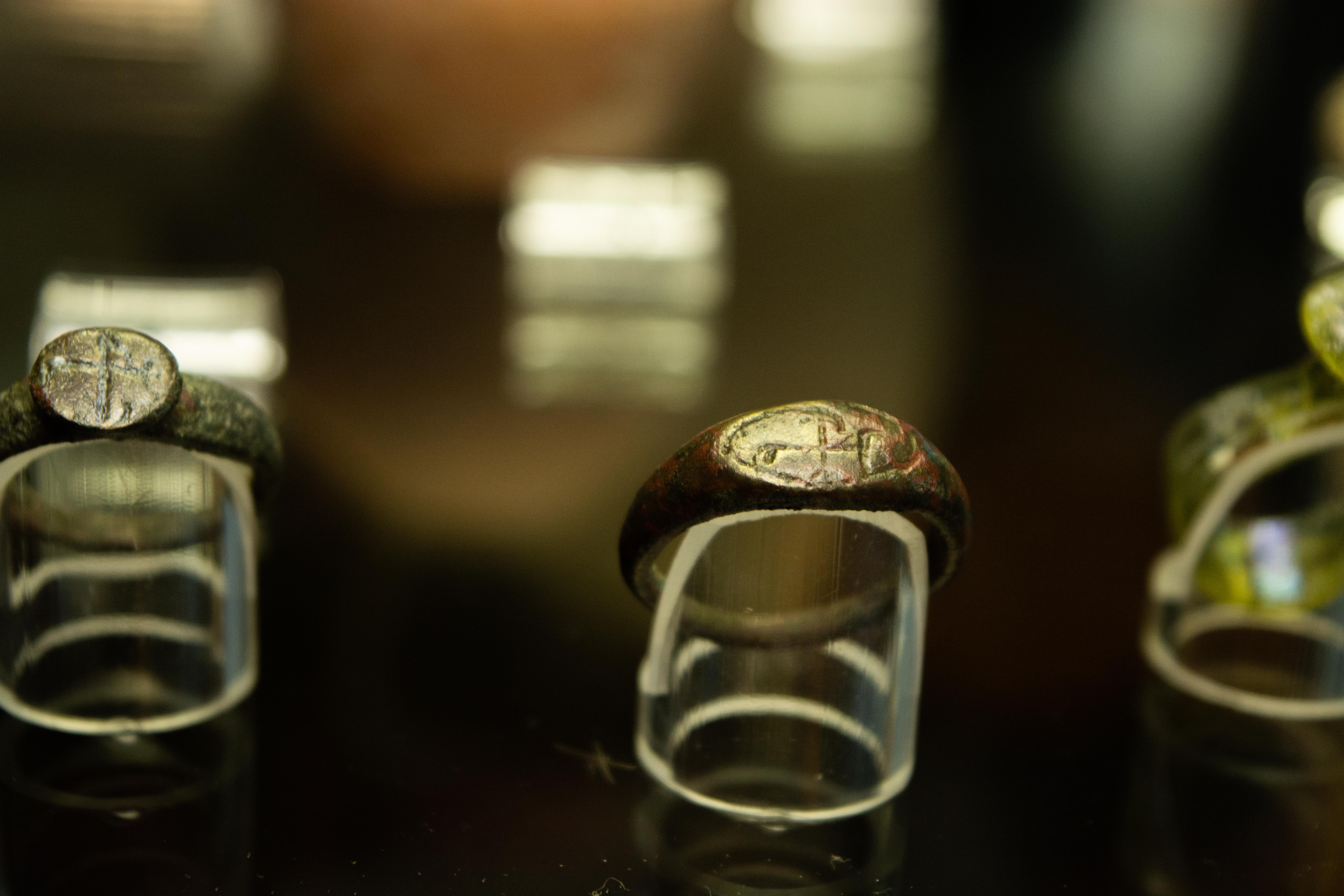
There was also a surprisingly lifelike portrait here:
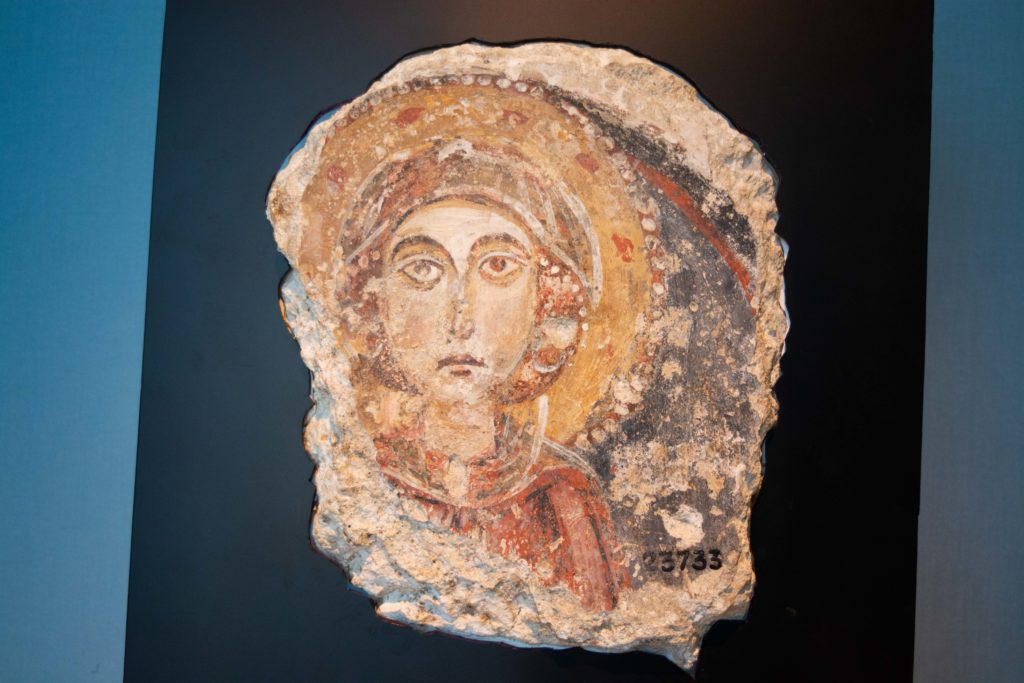
In the next room was a large model which shows what the island of Ortygia would have looked like in ancient times. The fortress is at the far end, marked “69,” and the Temple of Apollo is marked “1.” Our hotel was located on the semi-circular inlet that the Temple of Apollo faces:
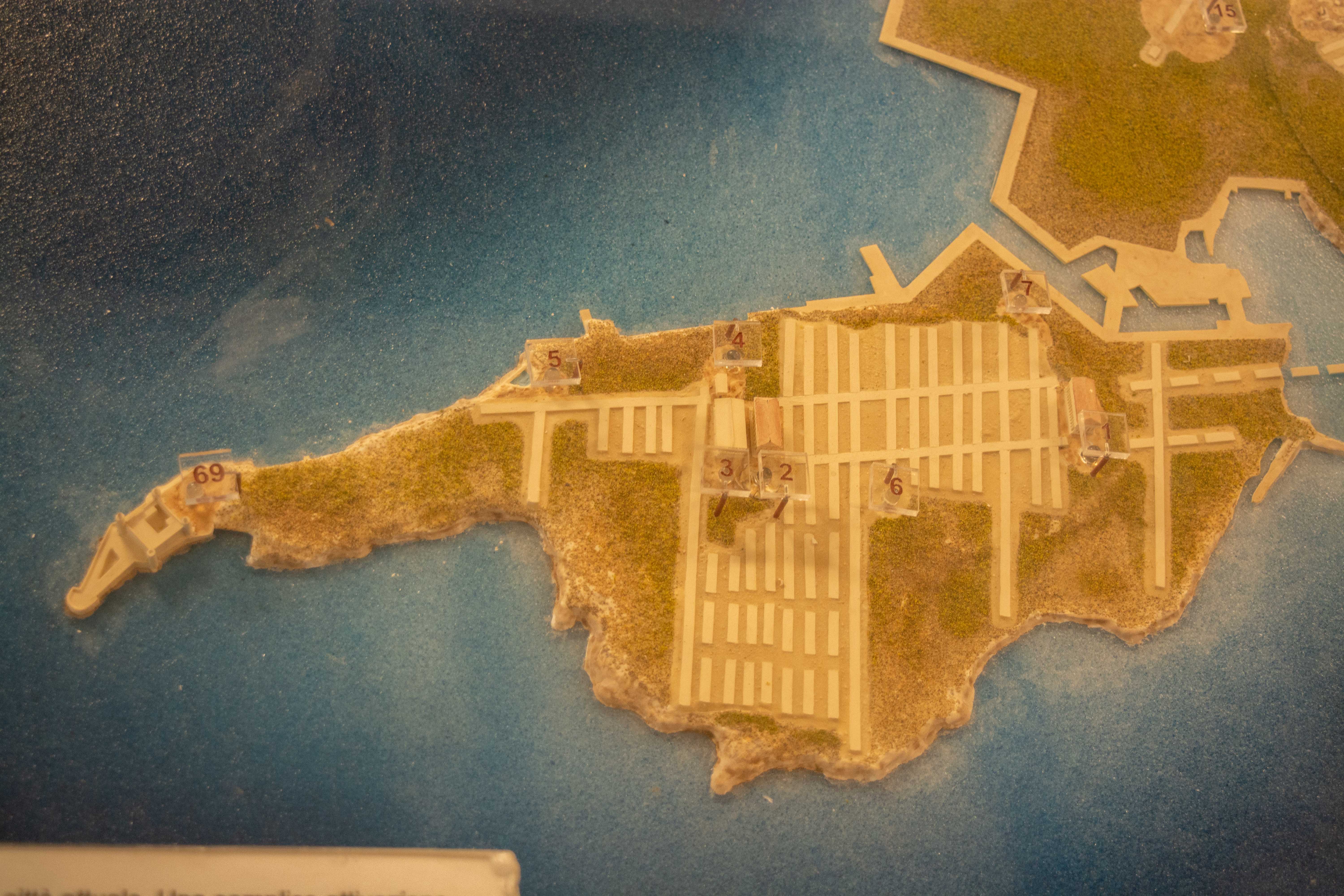
There was also a satellite image on the wall which shows the modern city of Syracuse. All of the sites with ancient ruins are marked with a small light. The island of Ortygia is at bottom center:
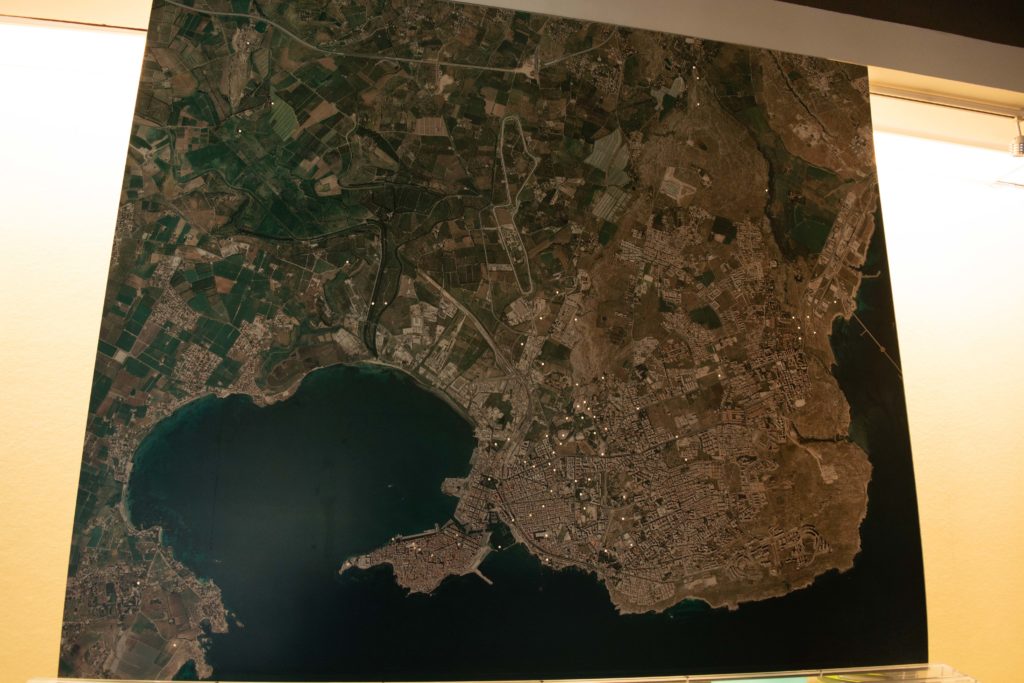
Another model shows some of the ruins in Syracuse as they would have looked in ancient times. The section I’ve shown here is the archaeological park that we visited earlier in the day. The Roman amphitheater (#16) and the Greek theater (#18) are clearly visible:
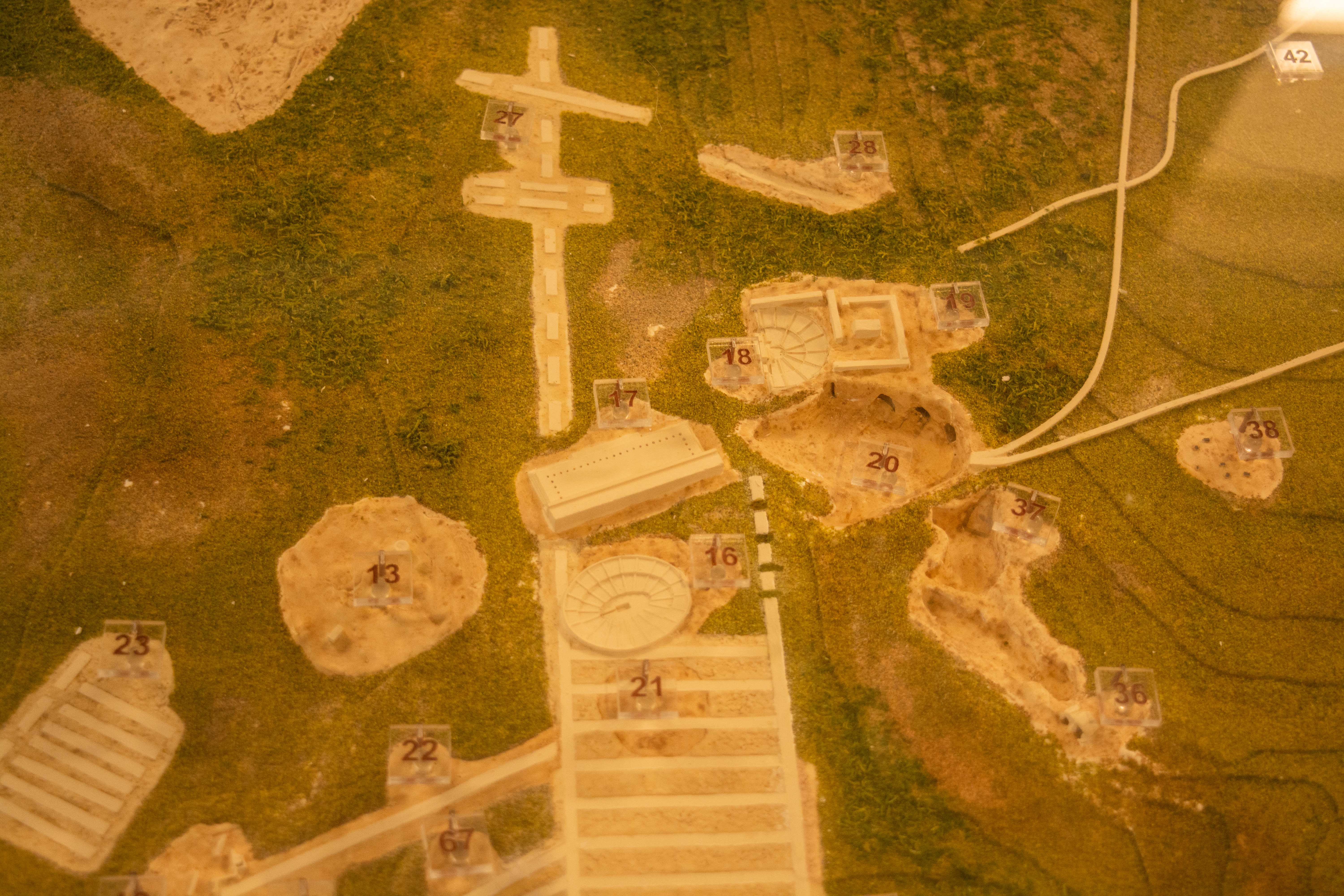
This museum is also home to famous statue of Venus, known as “Venus Landolina.” The statue has lost its head and its right arm, but most of the rest of it is intact:
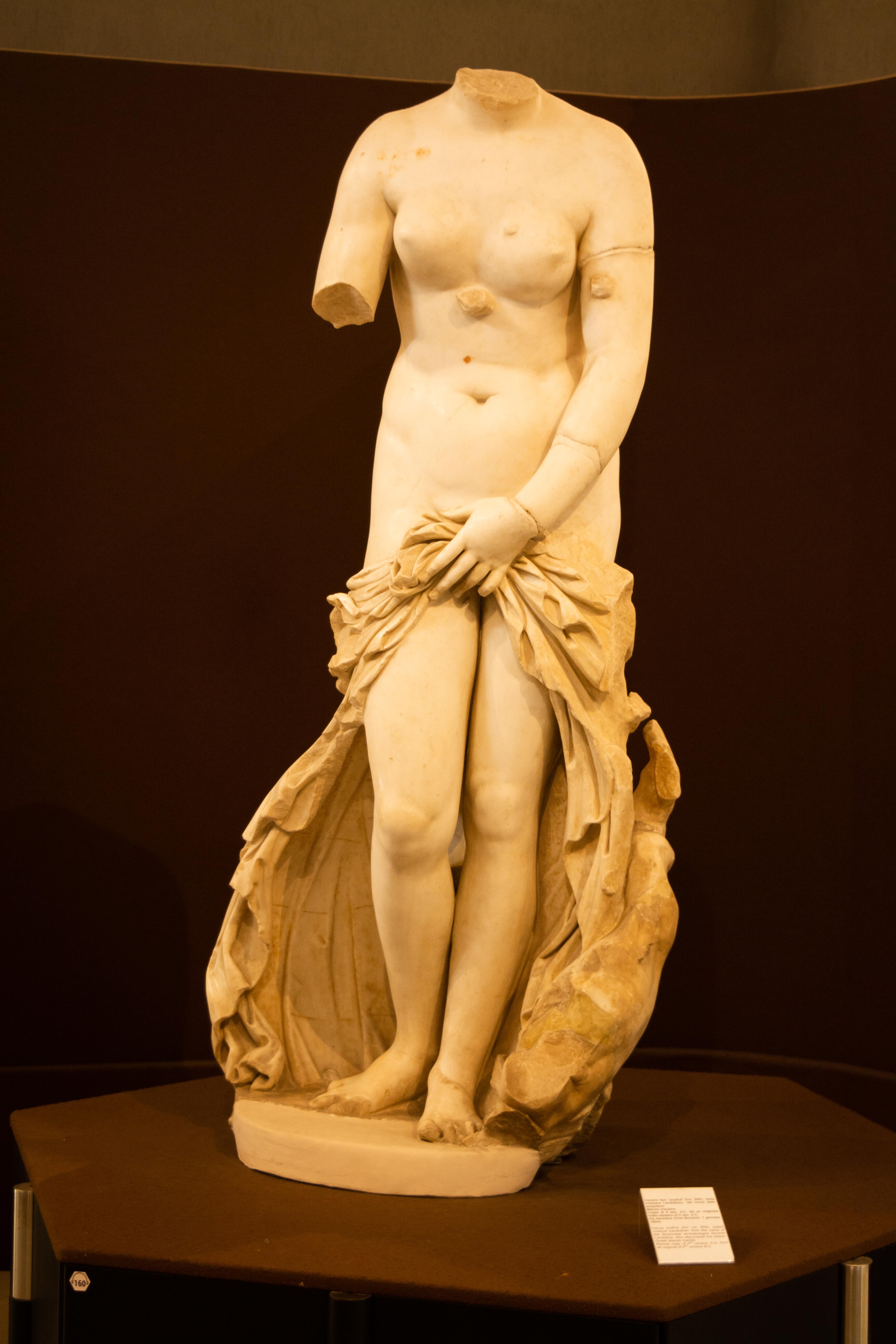
This clay pot had an image of Medusa in the bottom:
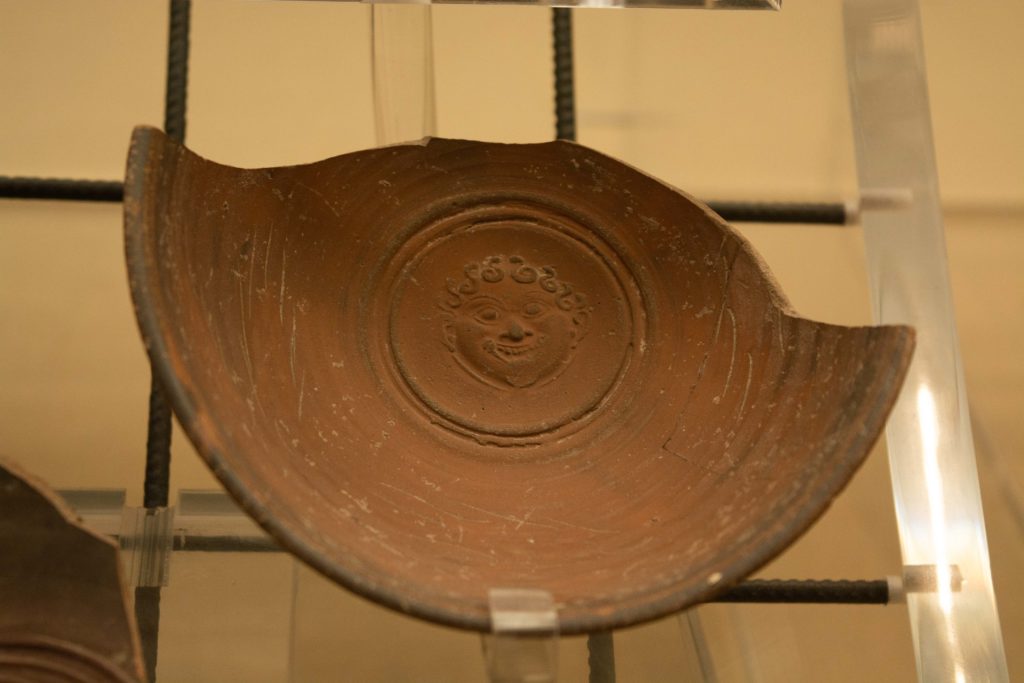
And nearby were some very lifelike stone busts:
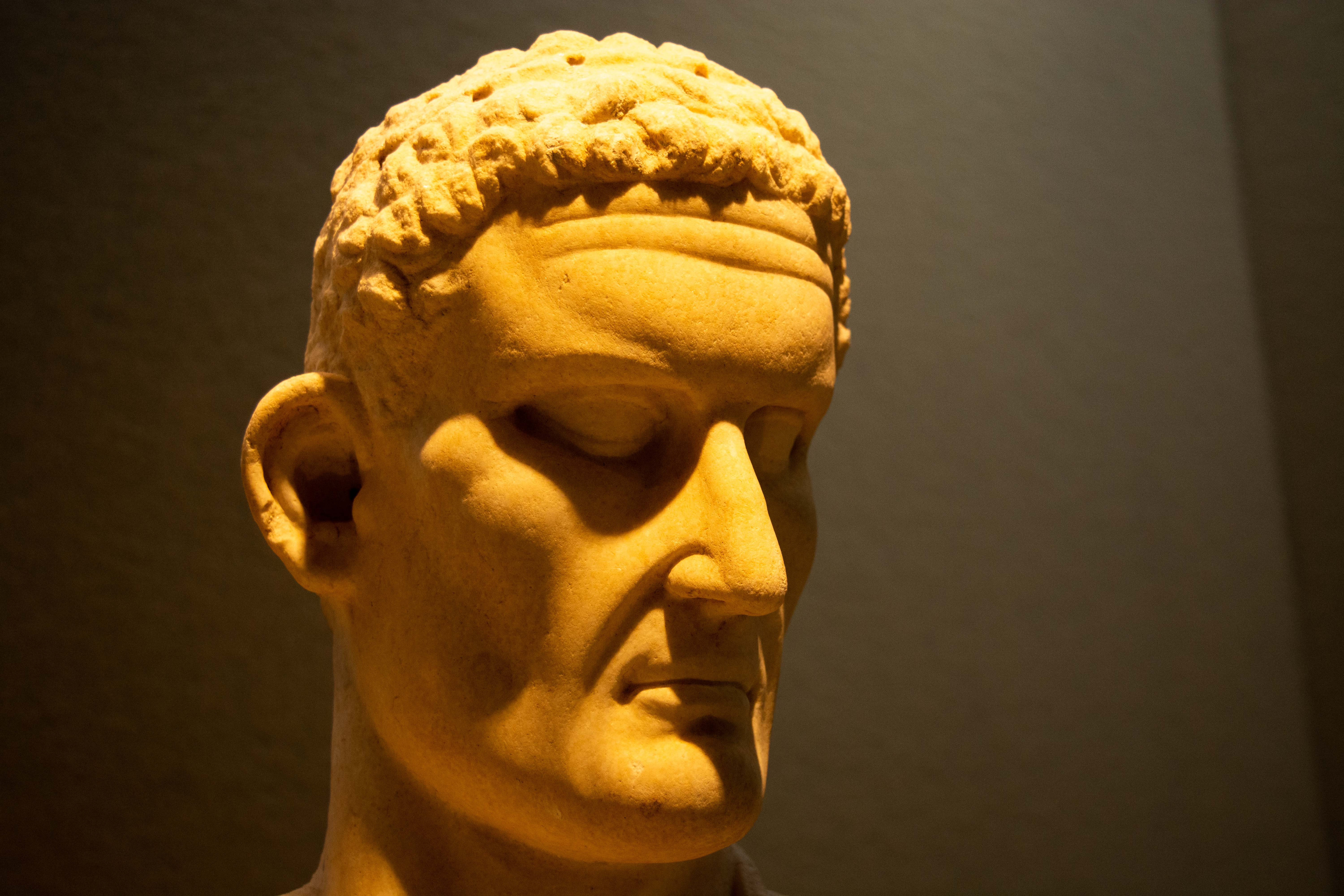
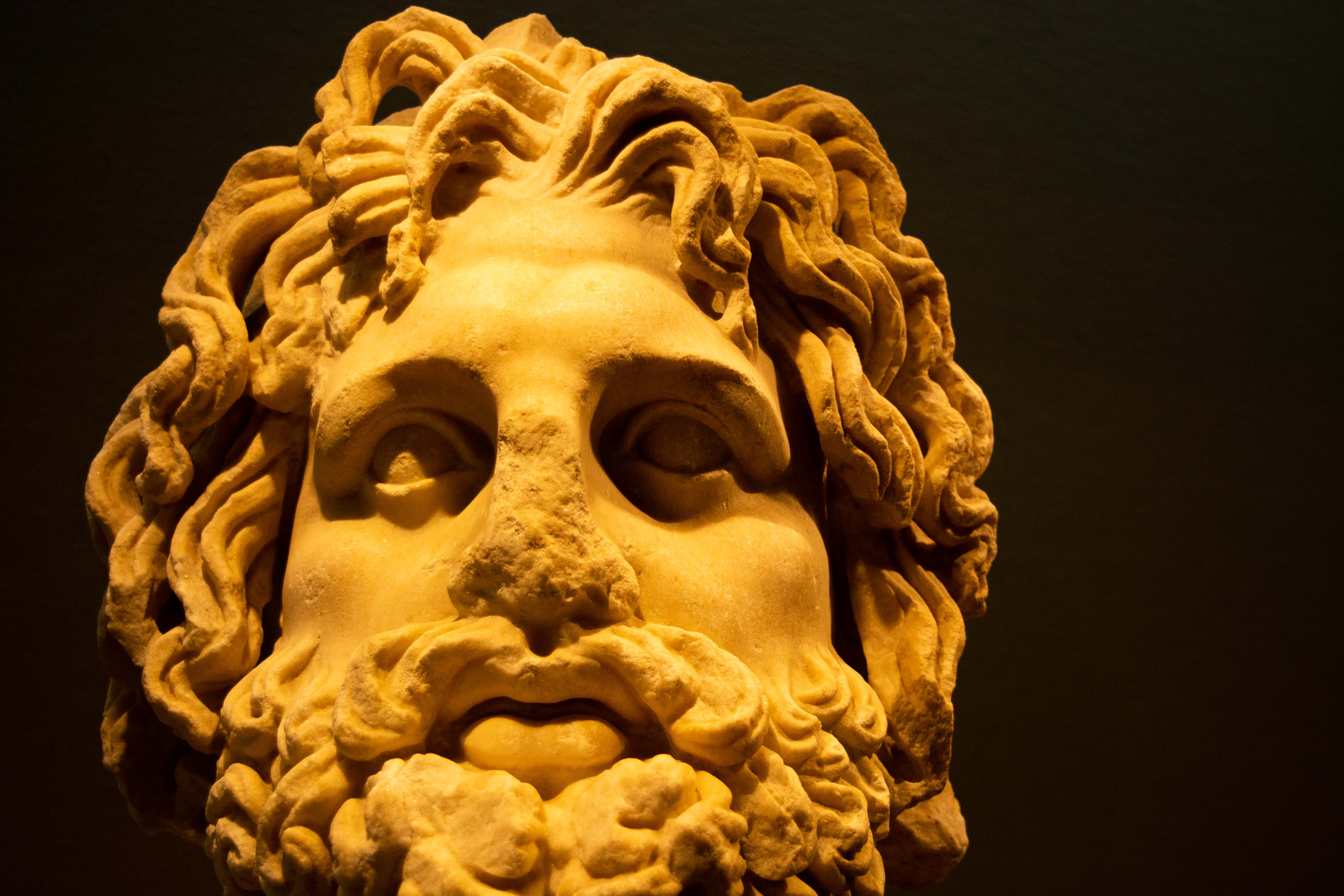
The last thing we examined here in the museum was a set of models which demonstrated what ancient Greek temples would have looked like while they were in use. Here is a well-preserved painted section from the upper part of one of the temples. The circular opening is for a storm drain which allowed water to flow off of the roof:
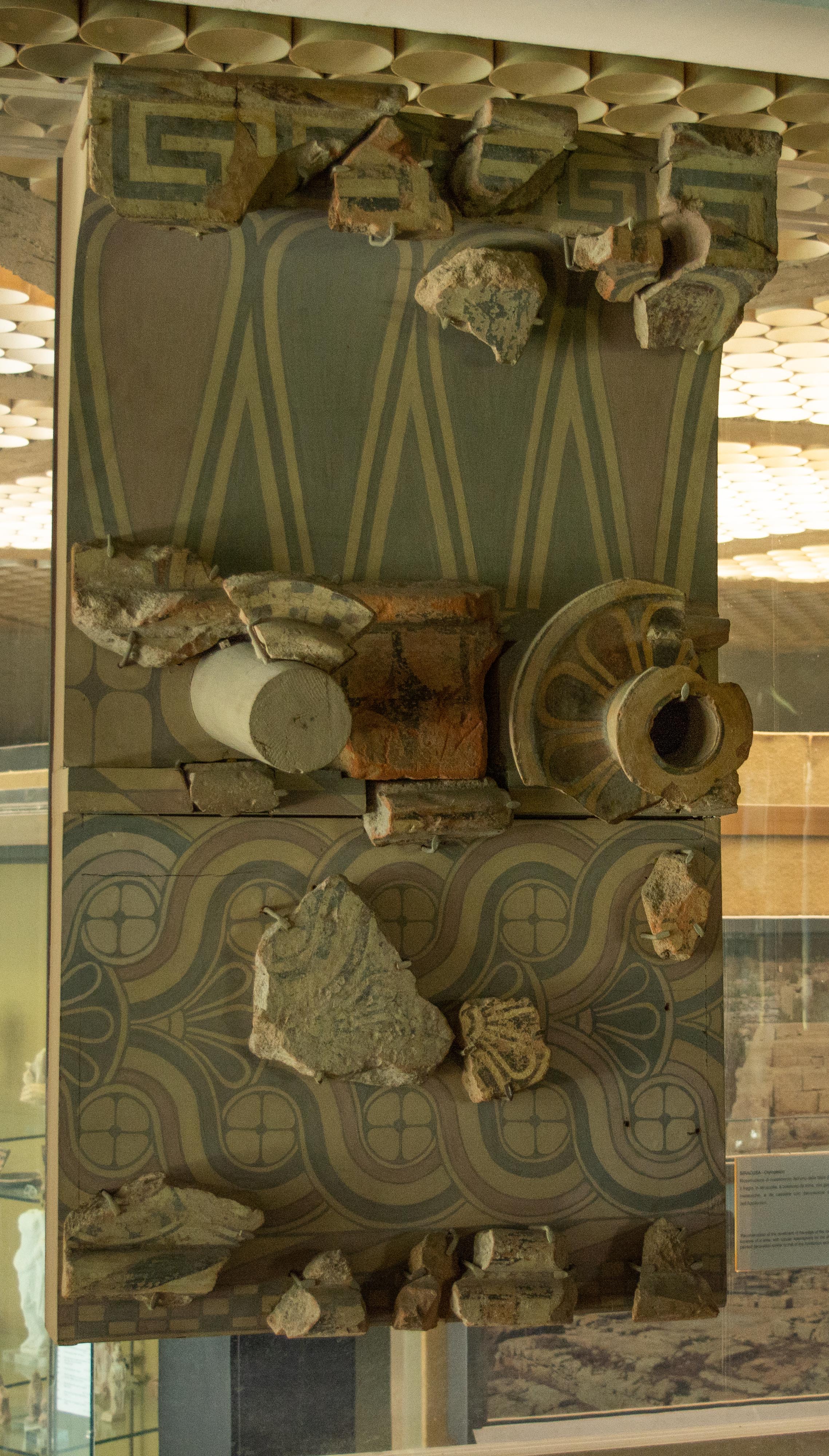
Here are some photos of the models. Notice that the outside is covered in white plaster, because there was no marble here in Sicily:
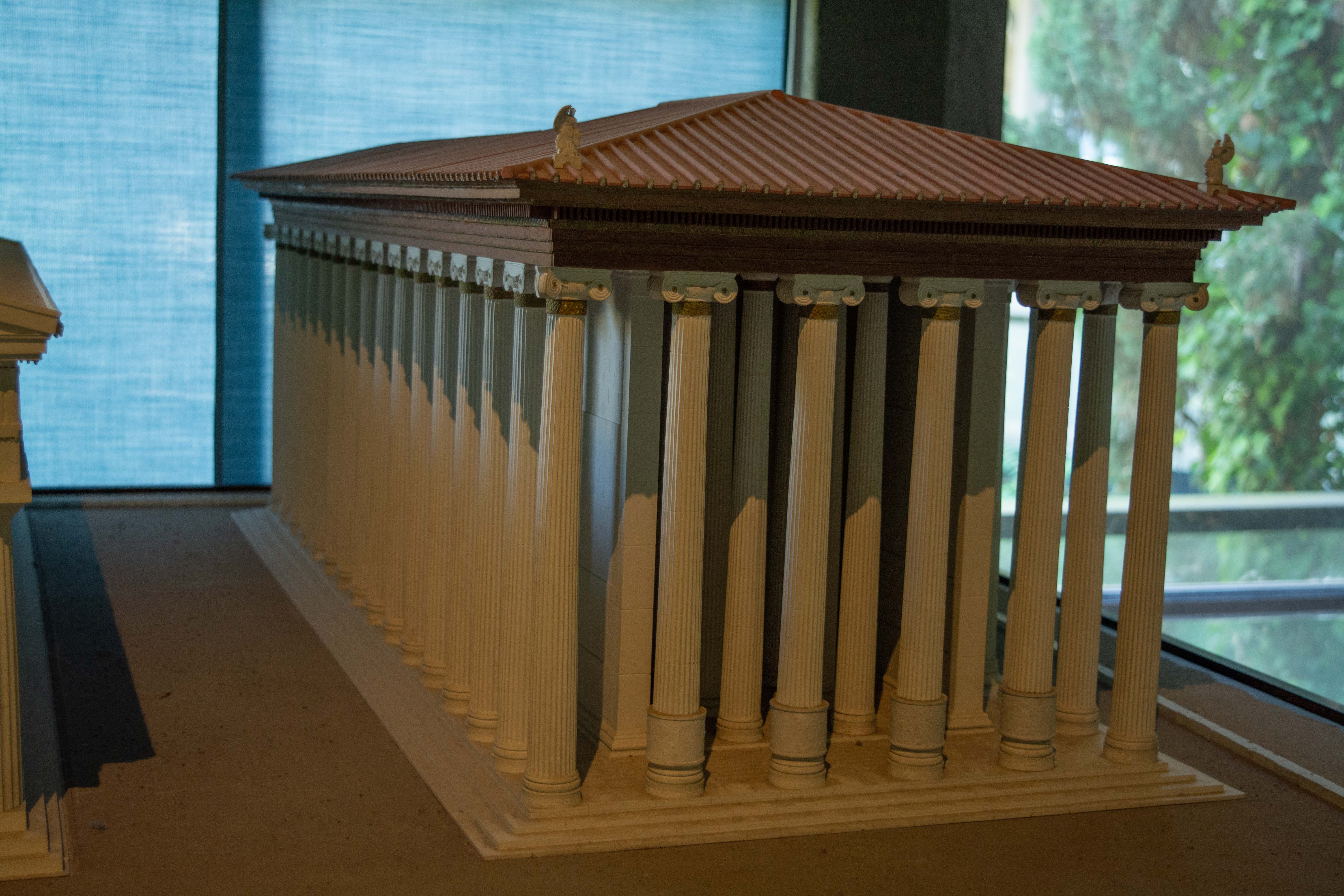
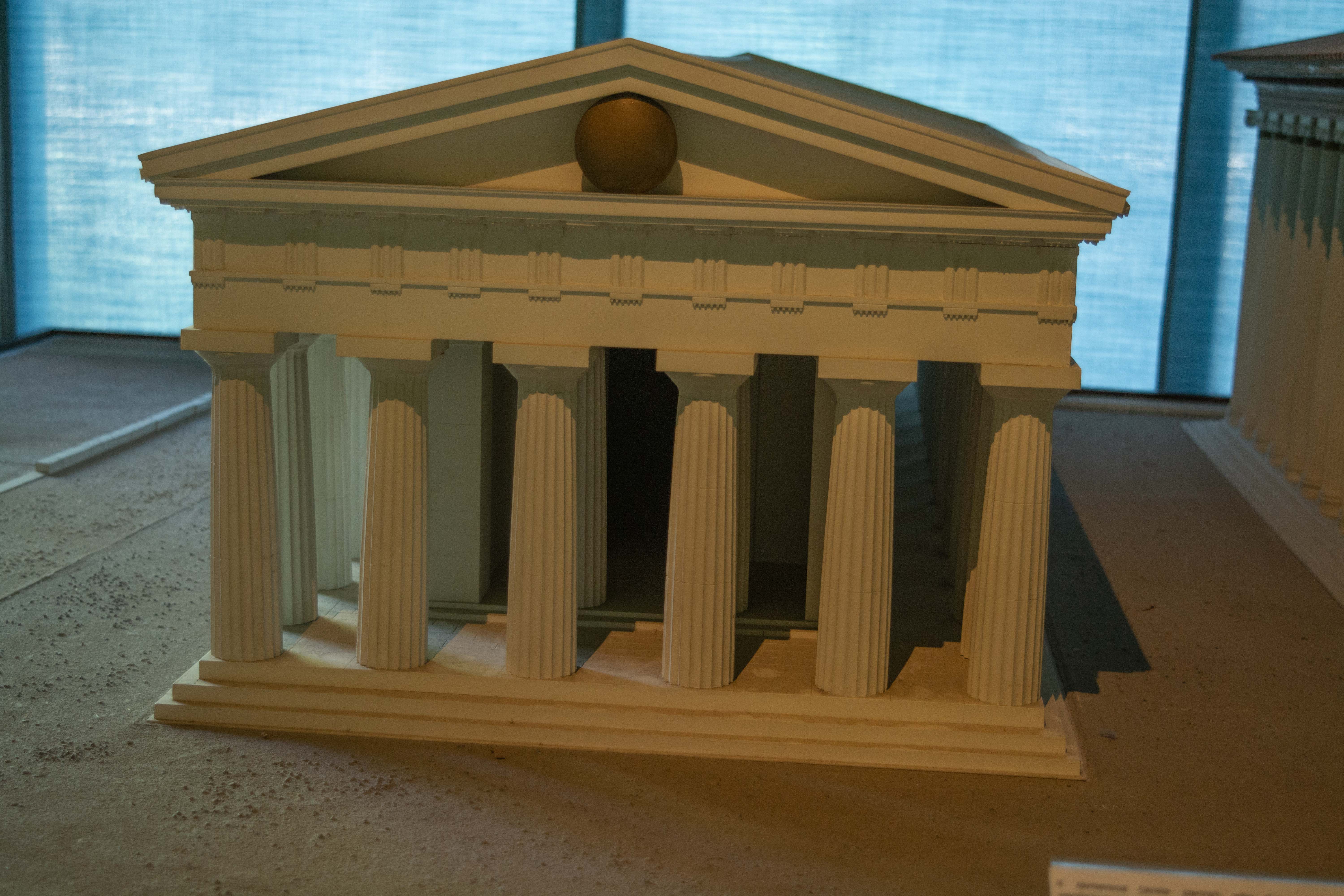
I especially liked this one, because I could imagine a small figure of a person walking behind the columns:
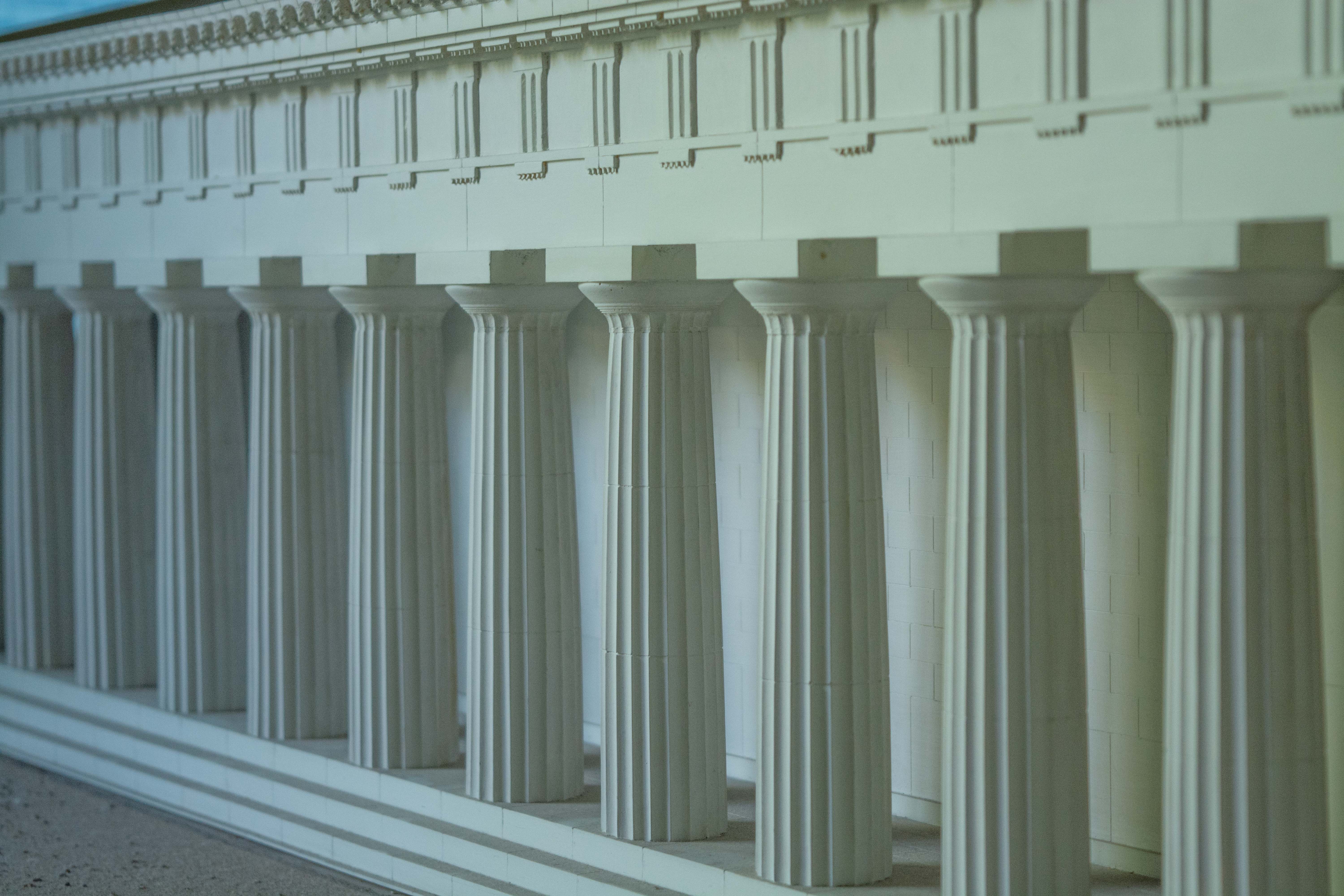
Next to these was a sectional model which showed how the wooden roof was built:
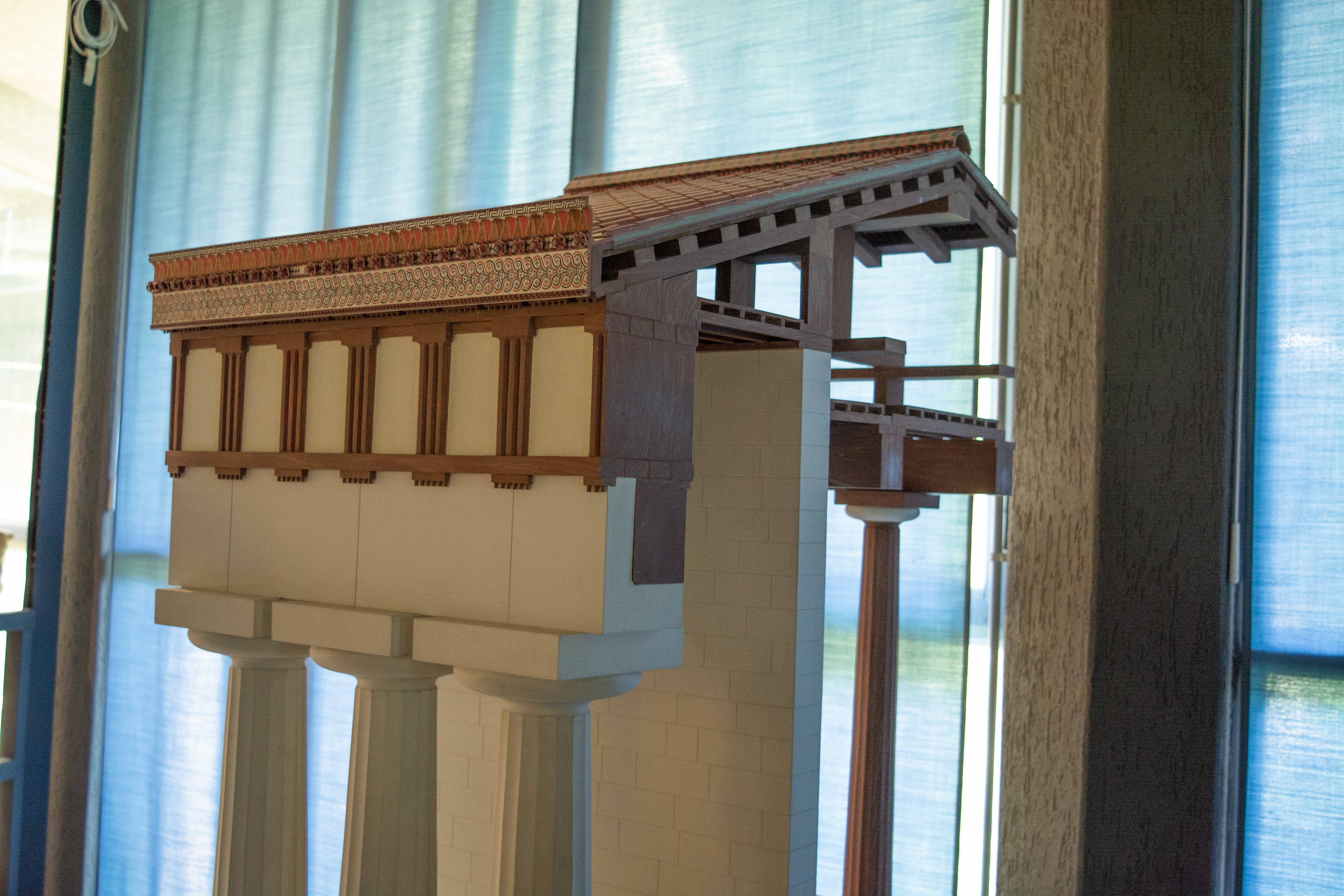
Here is a close-up of the brightly colored painted sections, seen in a real example earlier in this post. The circular storm drains are there too:
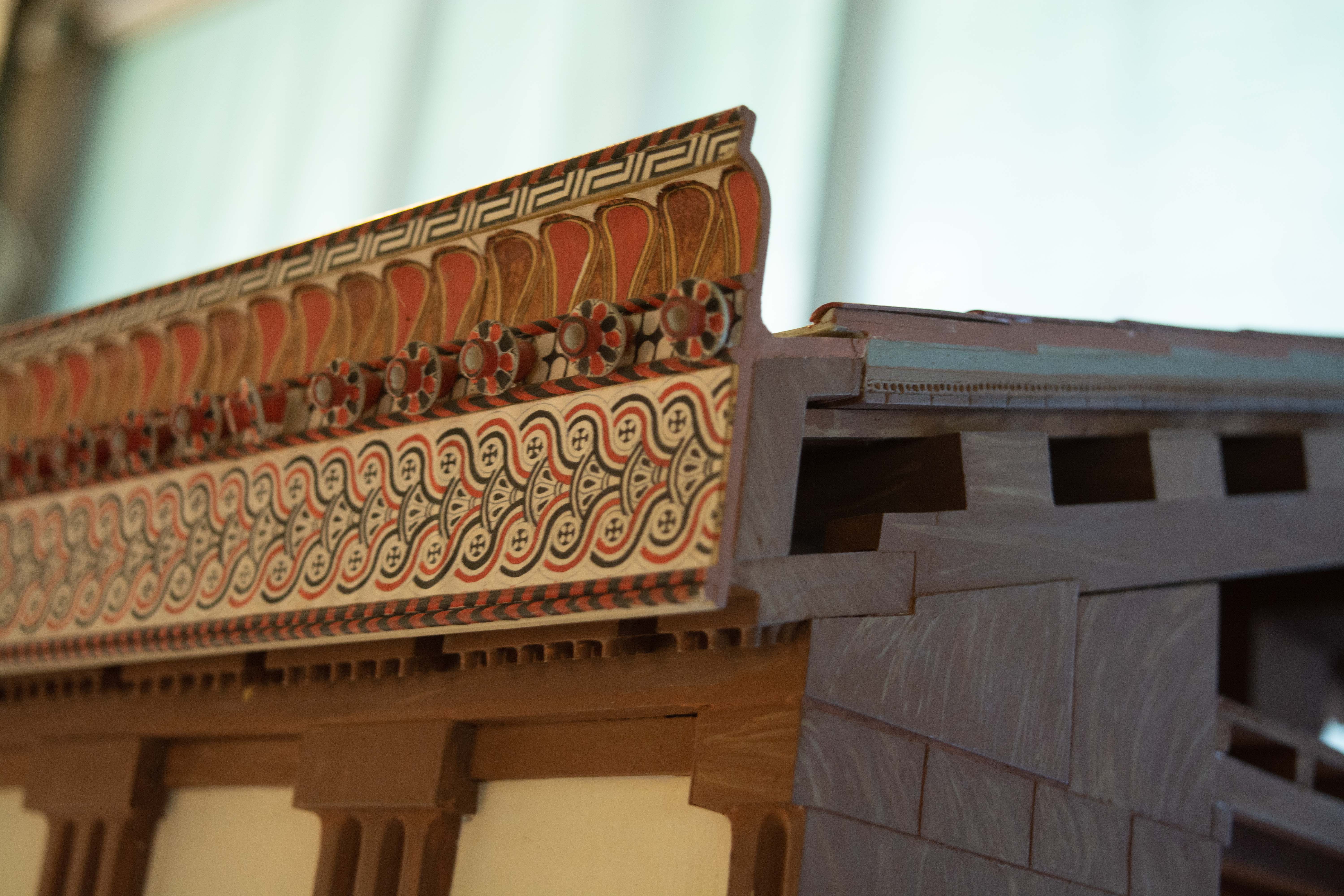
Here is a close-up of the rafters:
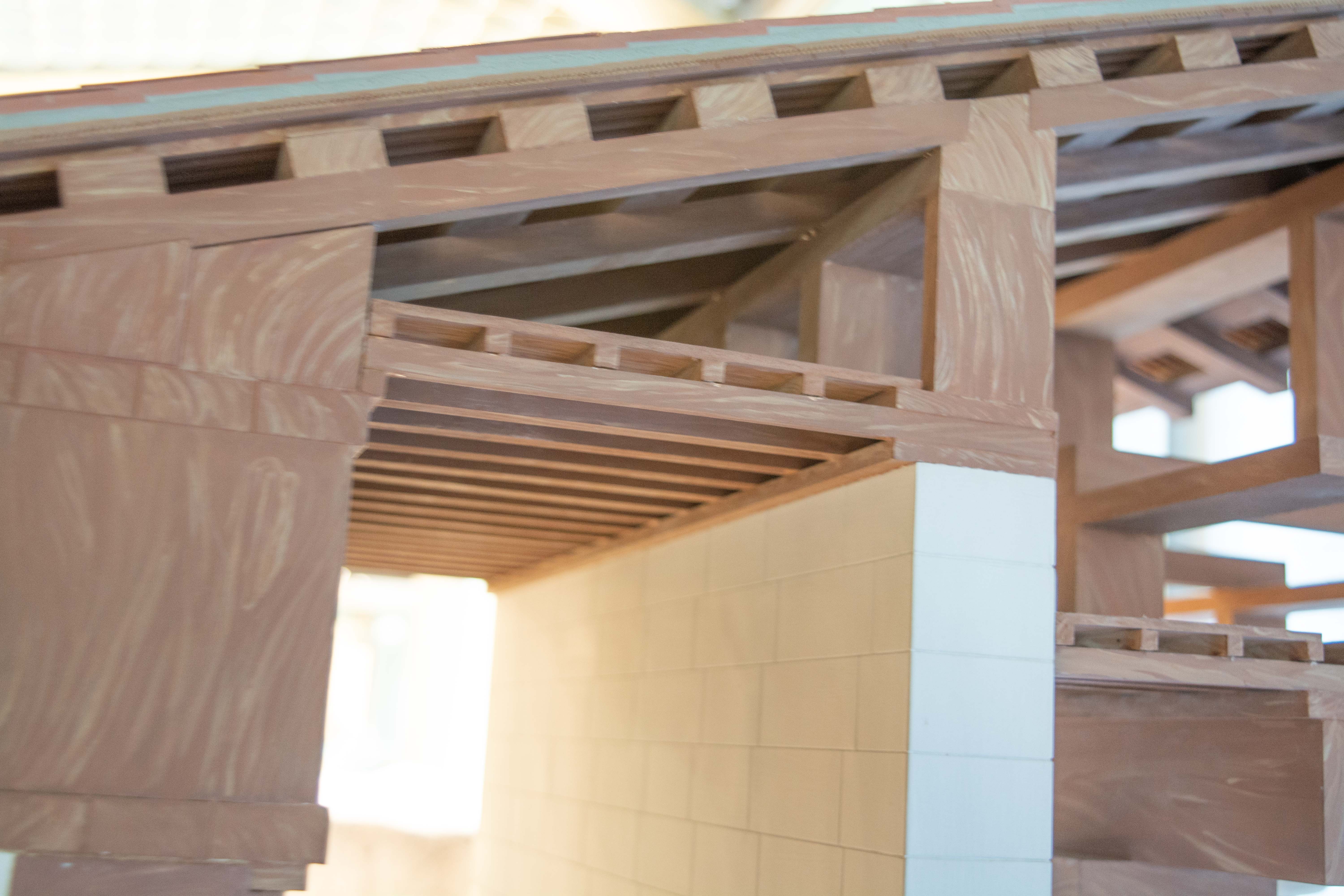
And a more general view of the wooden roof structure sitting on top of the interior columns:
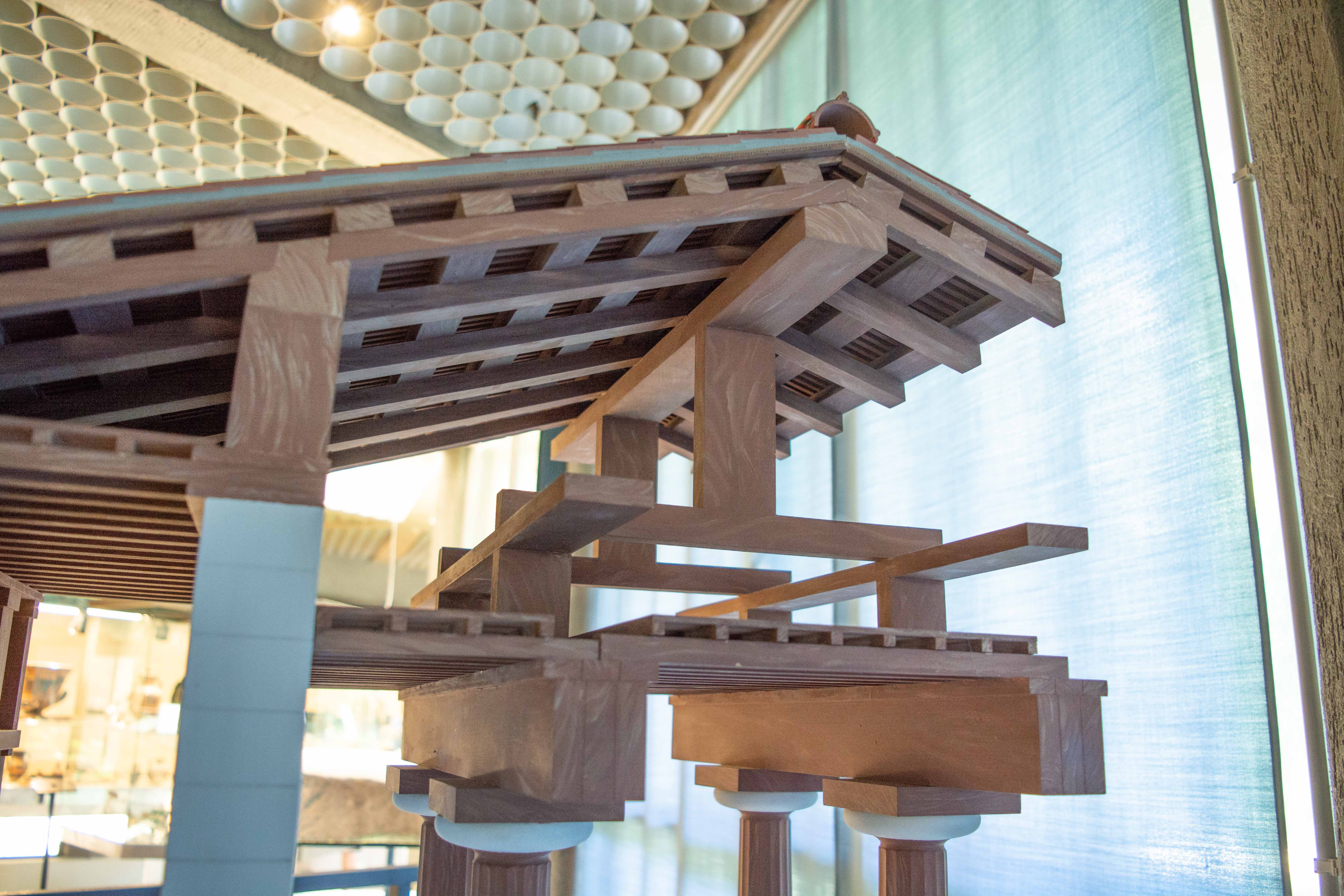
Just a few more:
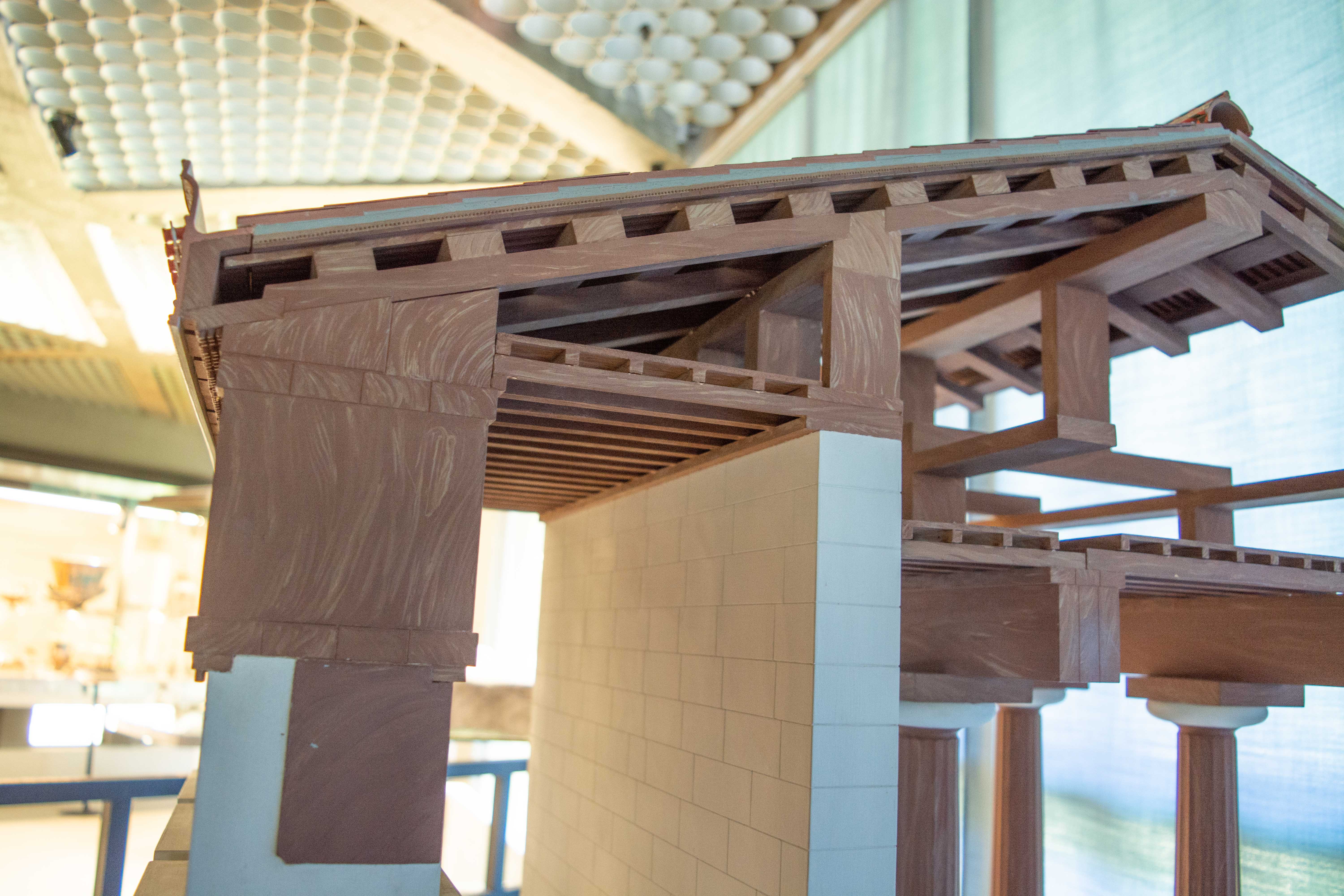

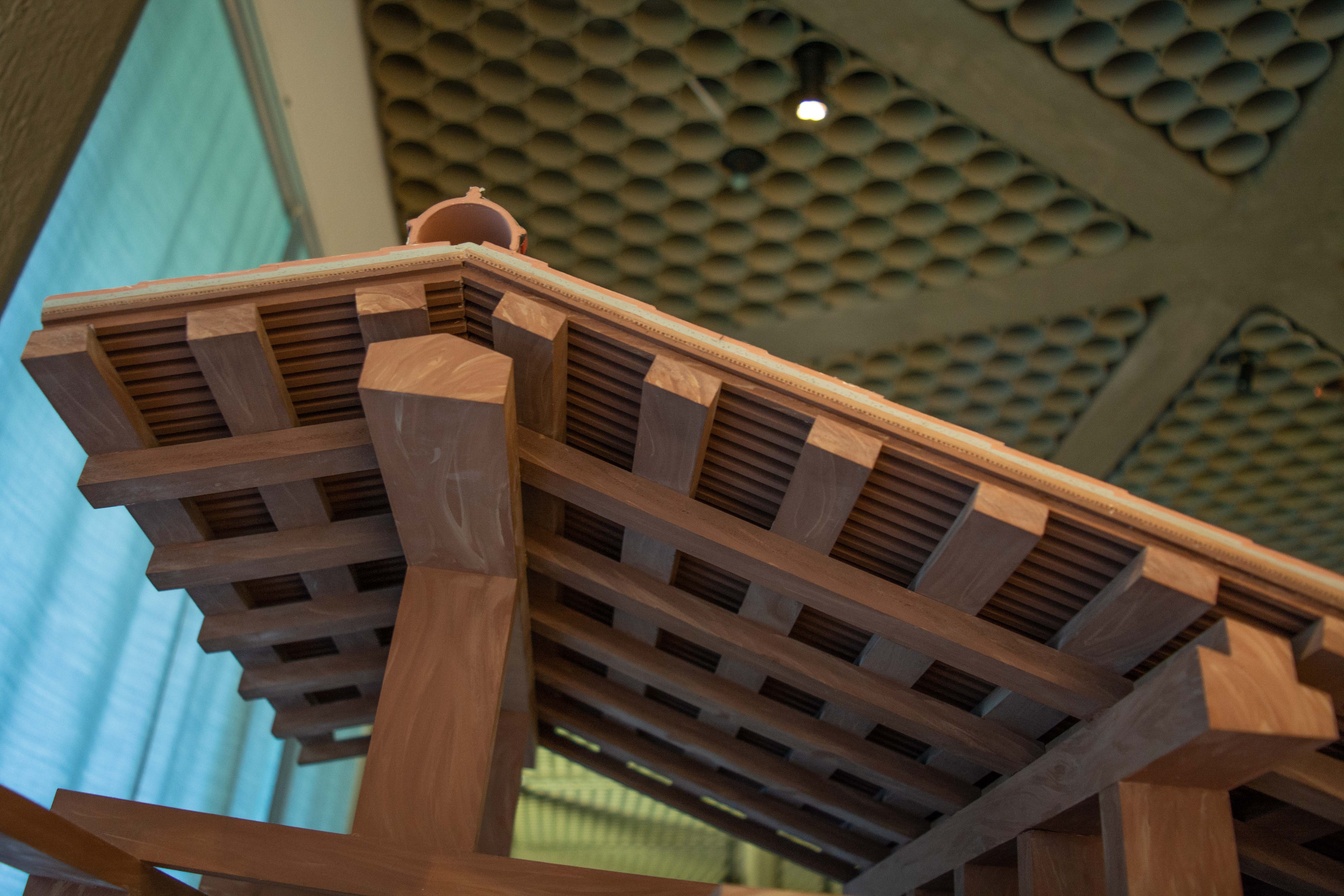
After leaving the museum we were treated to one last group dinner at a restaurant near the hotel. We enjoyed the food, the wine, and the company even more than usual this night. The next morning we would have to be up early to drive back across the island to Palermo. From there we would catch our flights home.
That was the end of Day 5! Thank you all very much for reading my blog. I hope you enjoyed the pictures and the stories as much as I did. I may continue to use this blog in the future to share my travel adventures. Thank you very much, and best wishes to each one of you!
-Kyle
